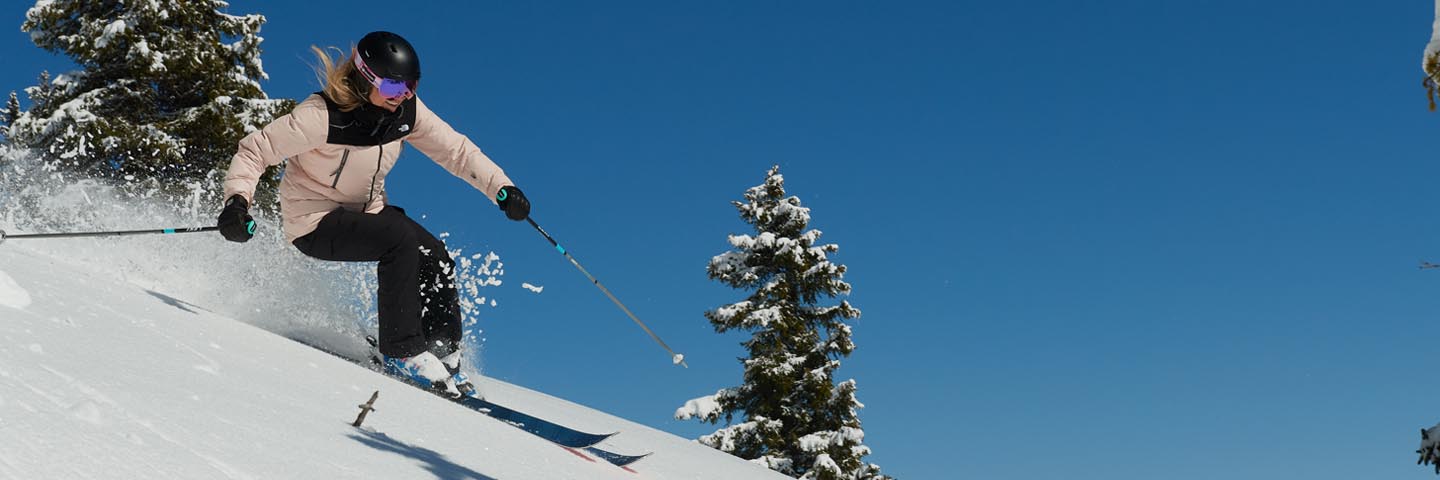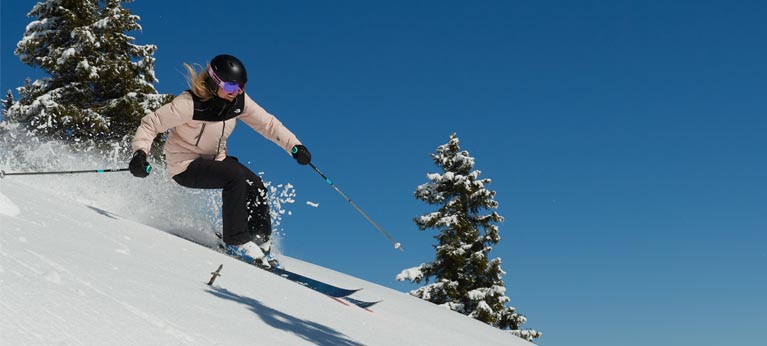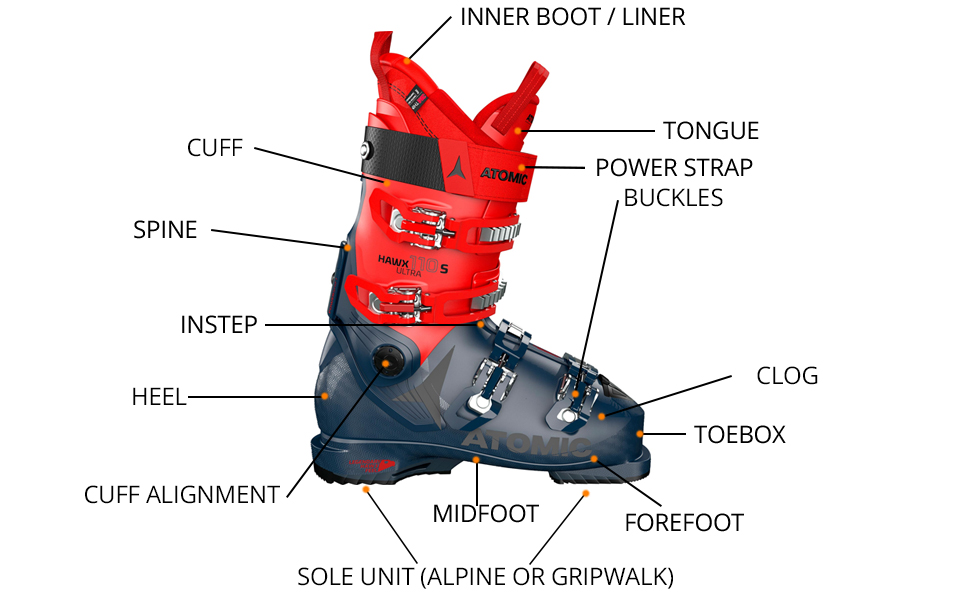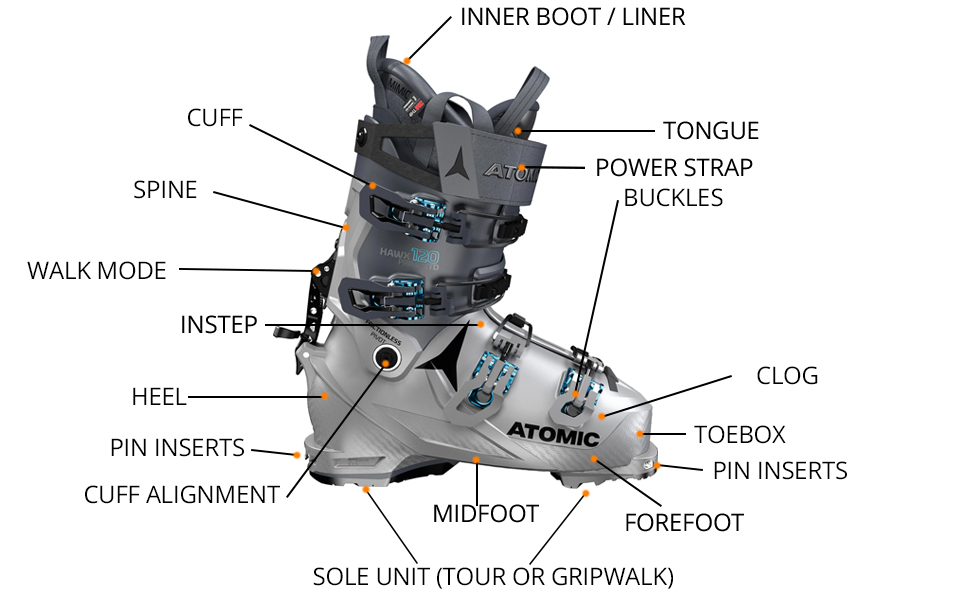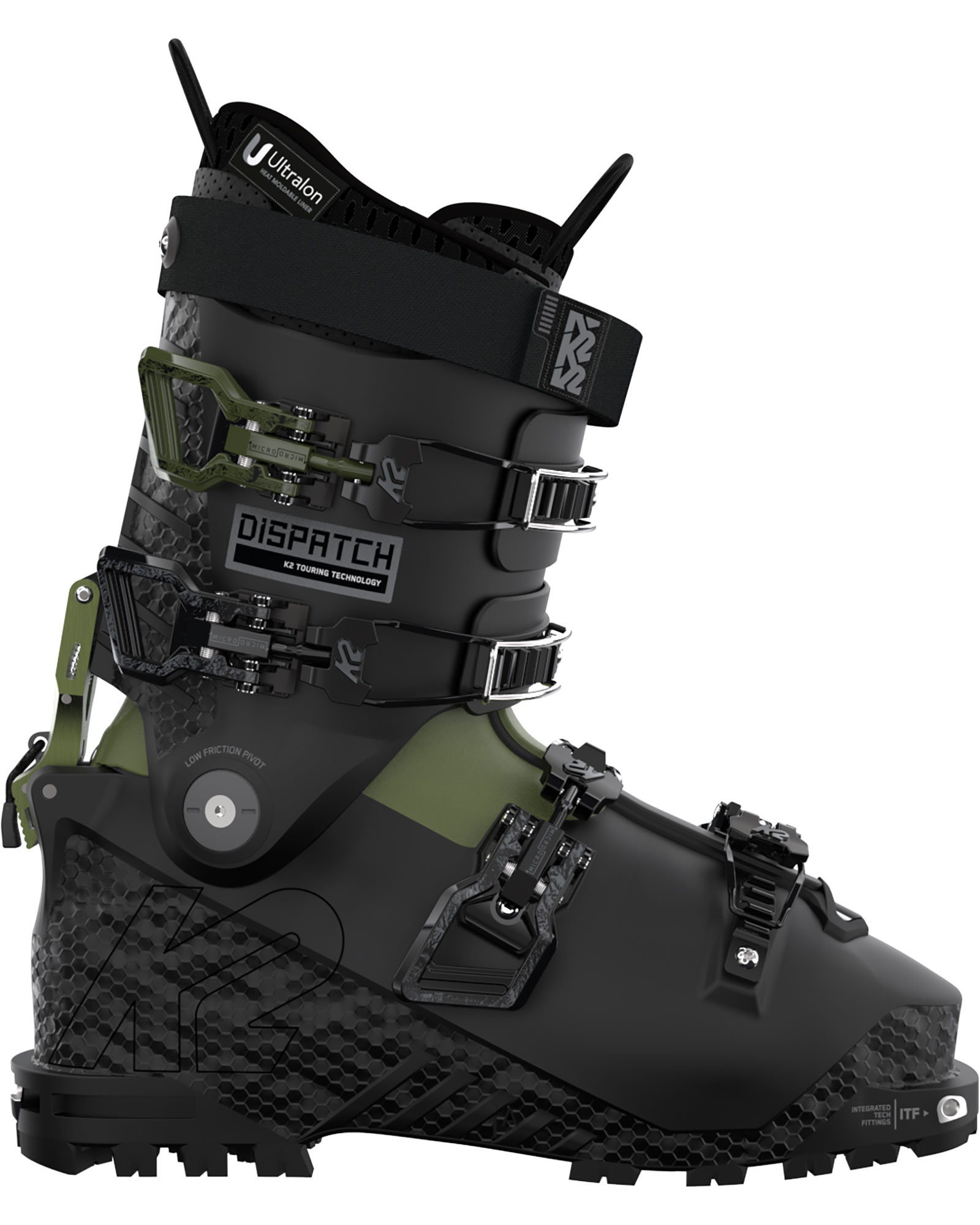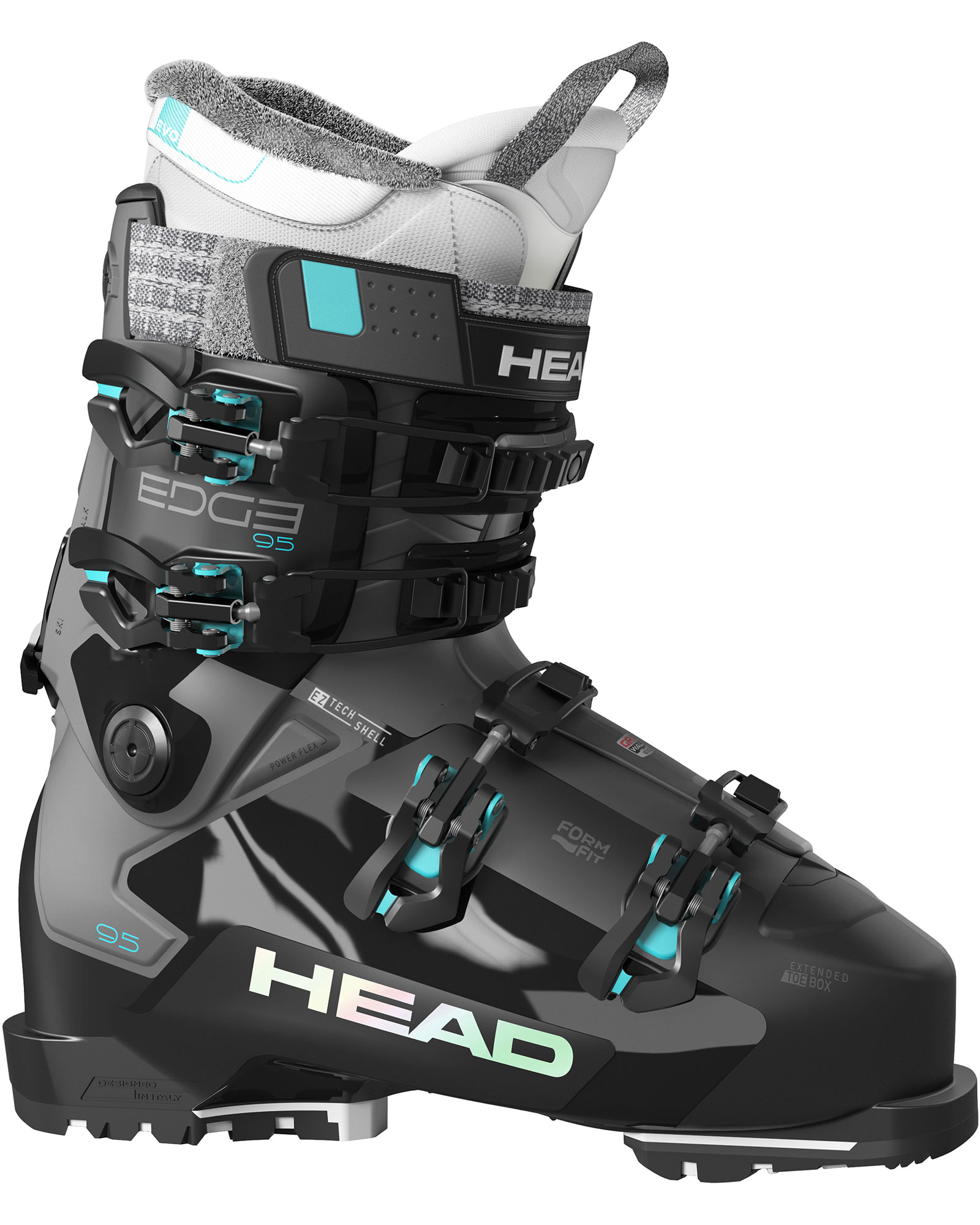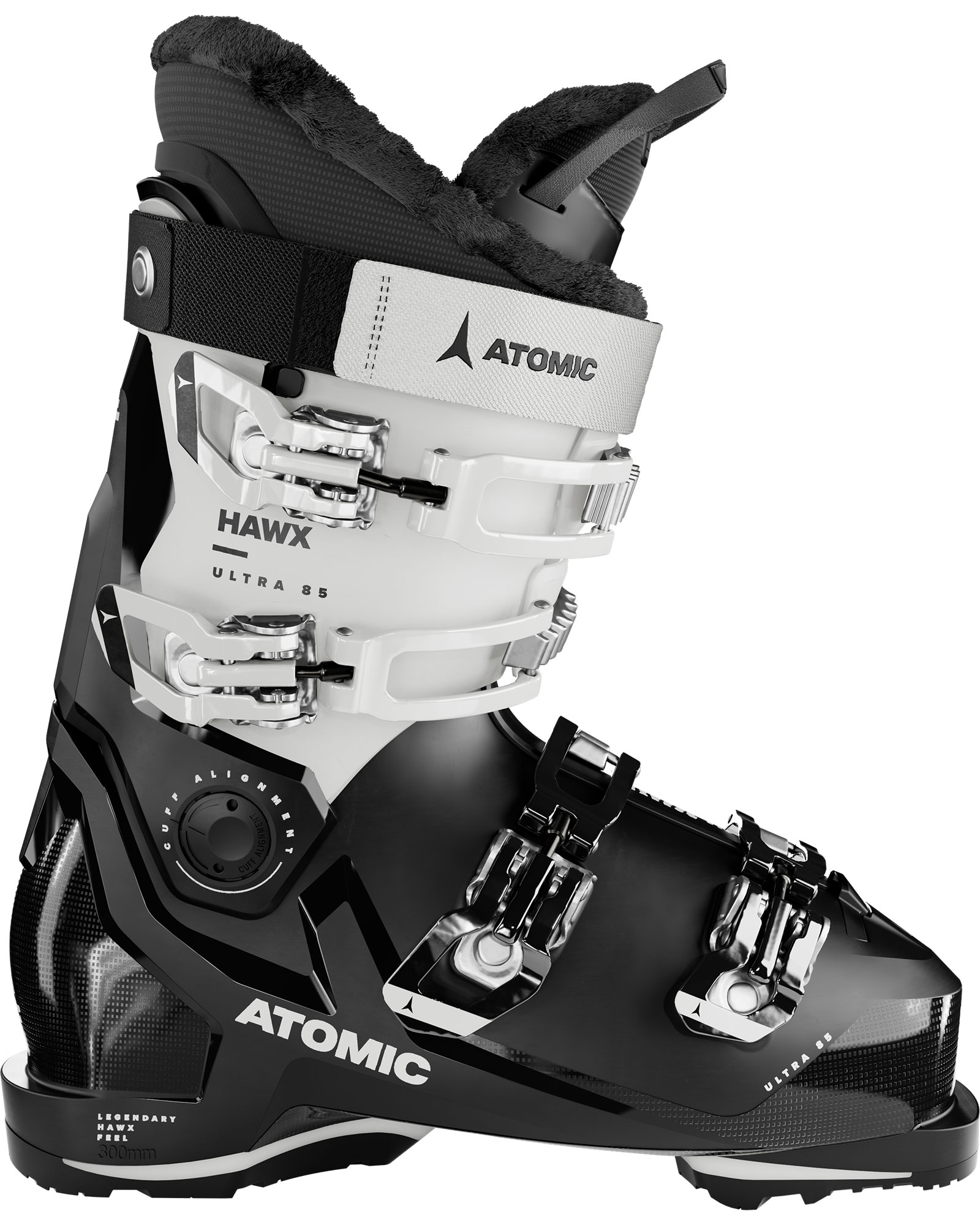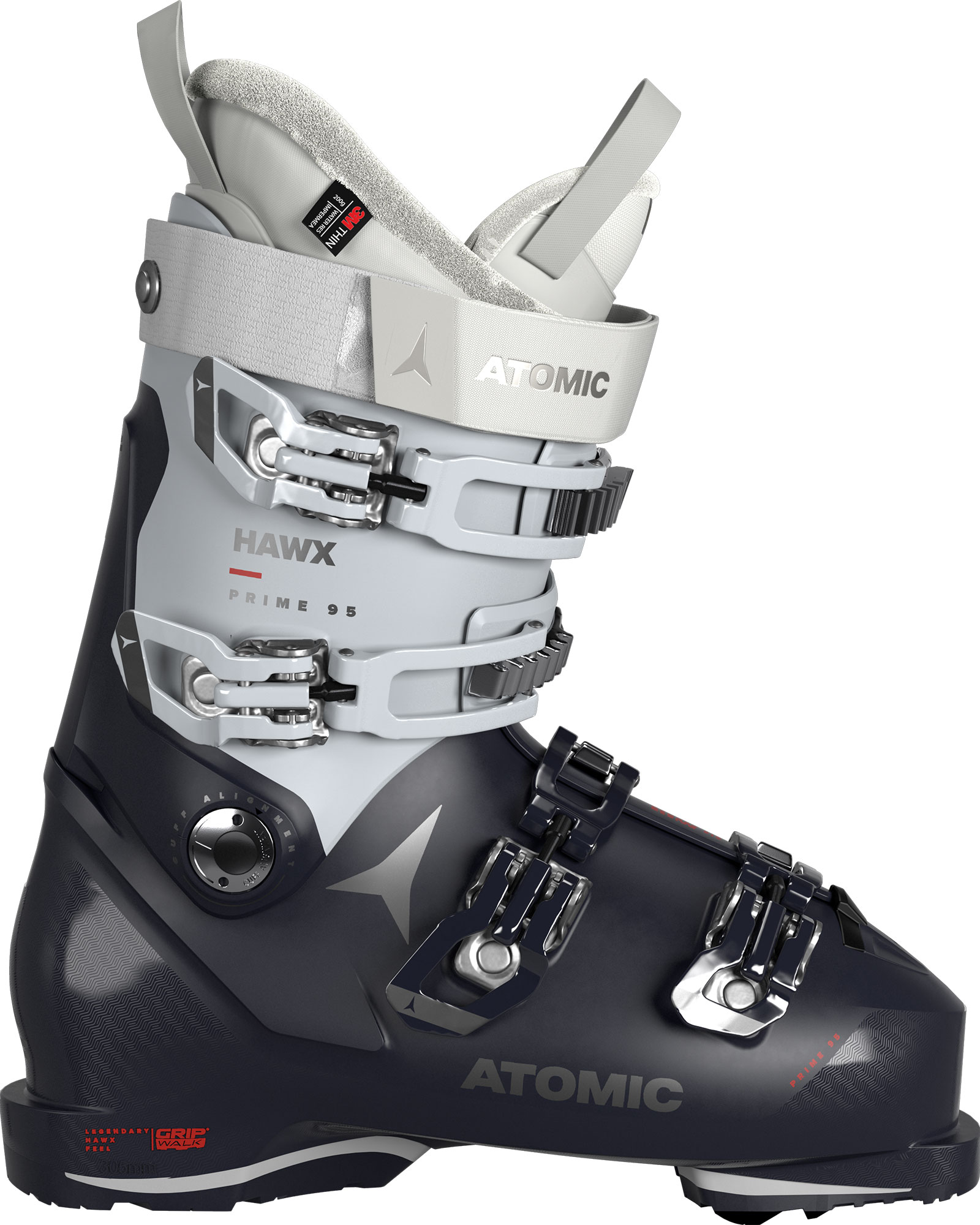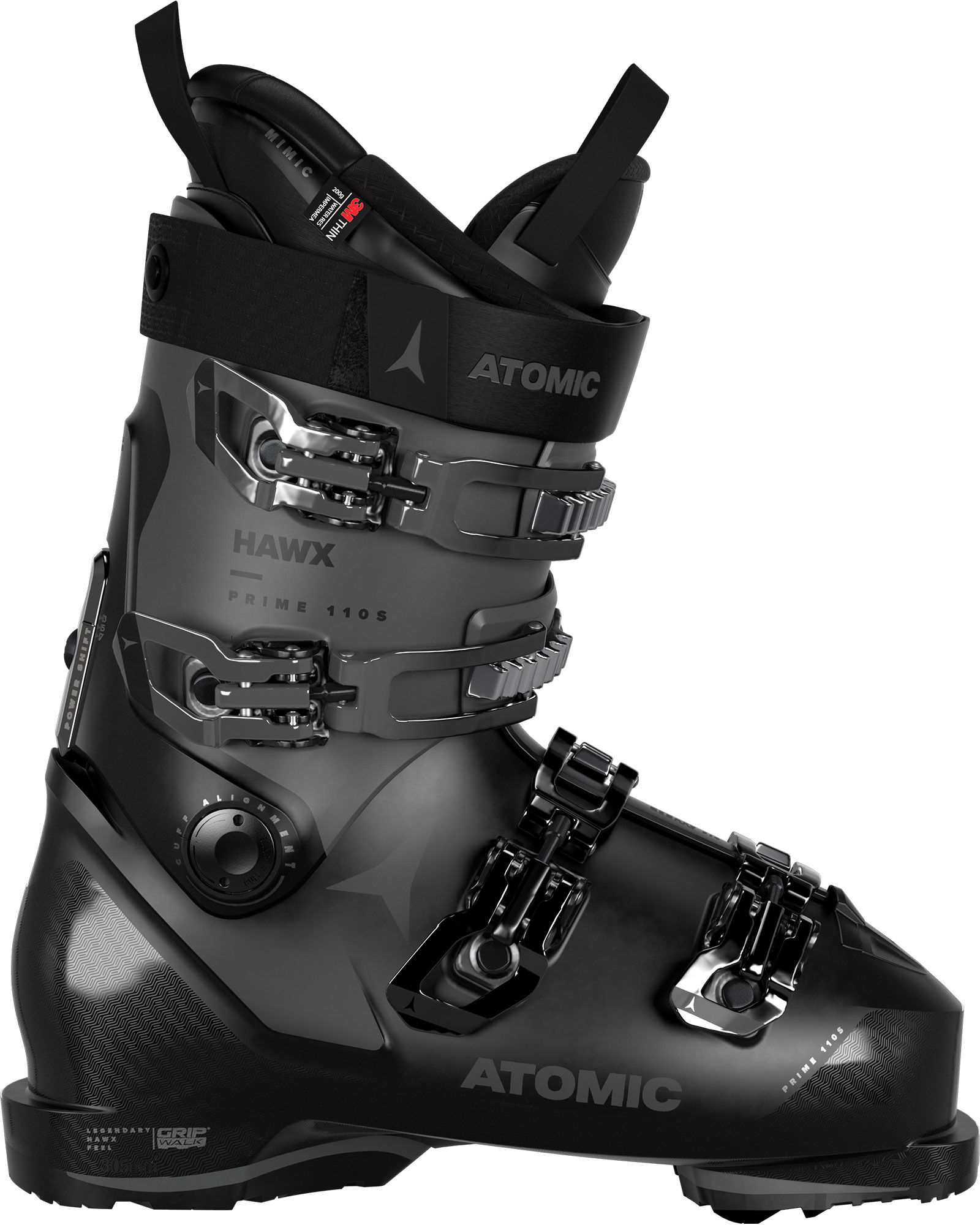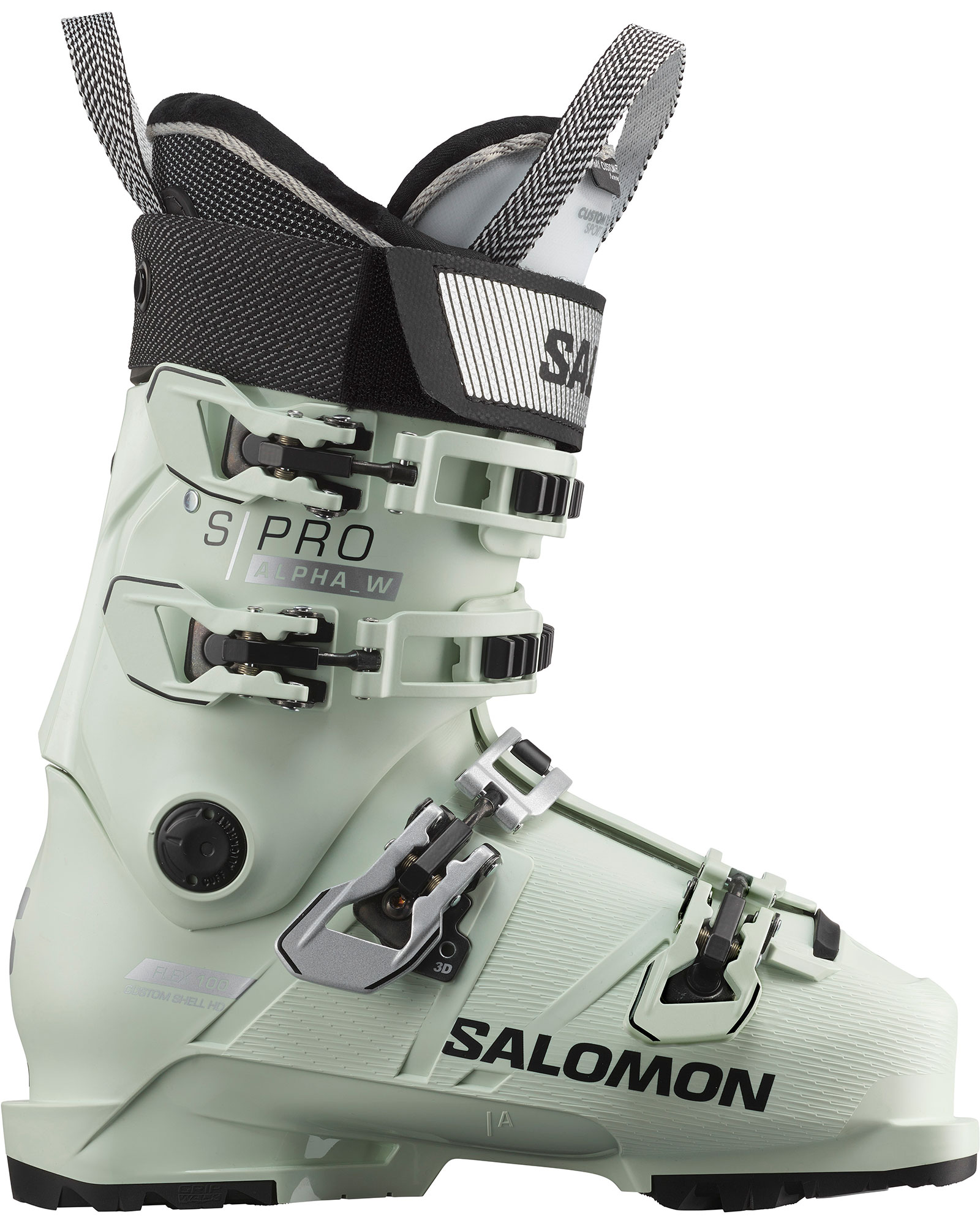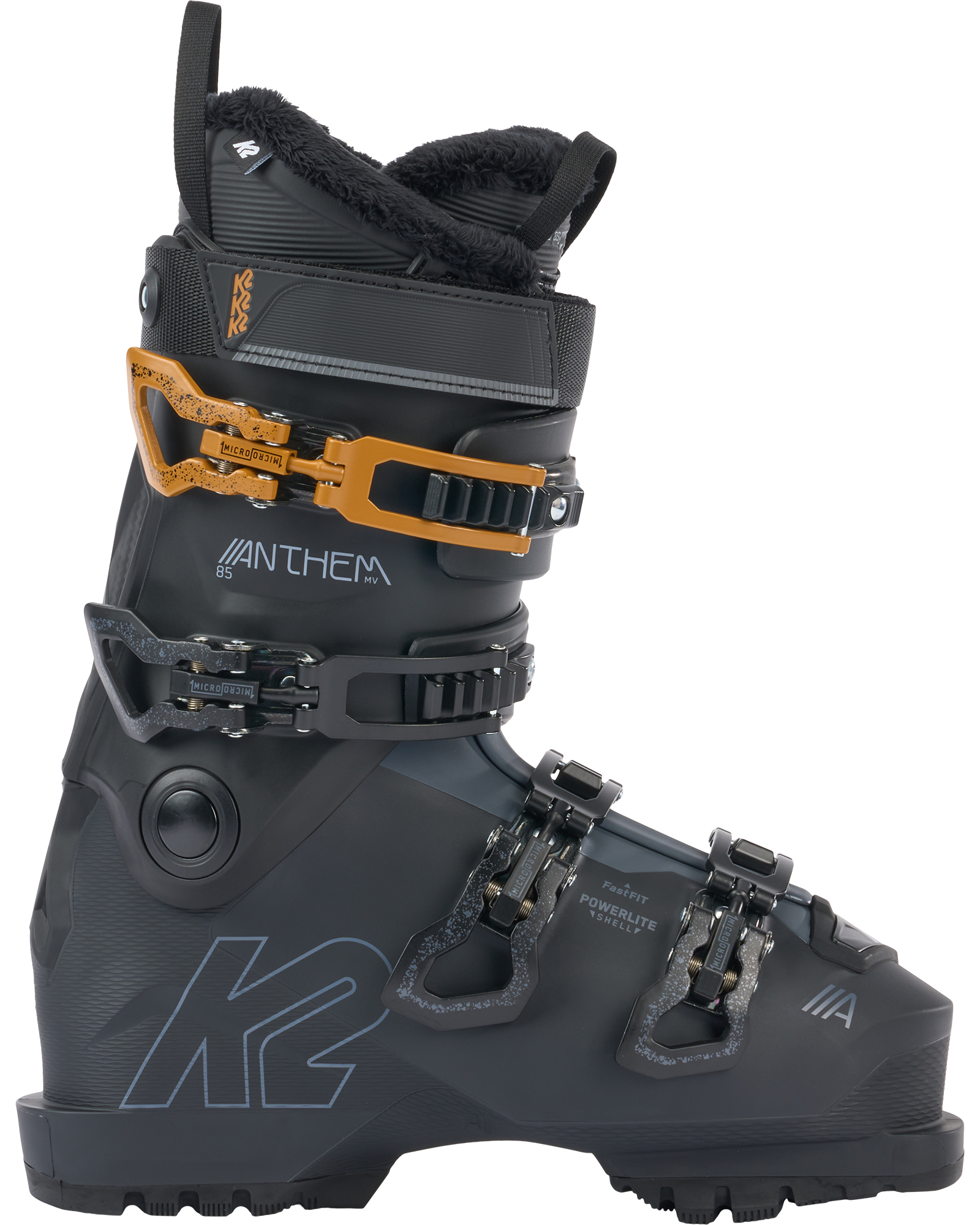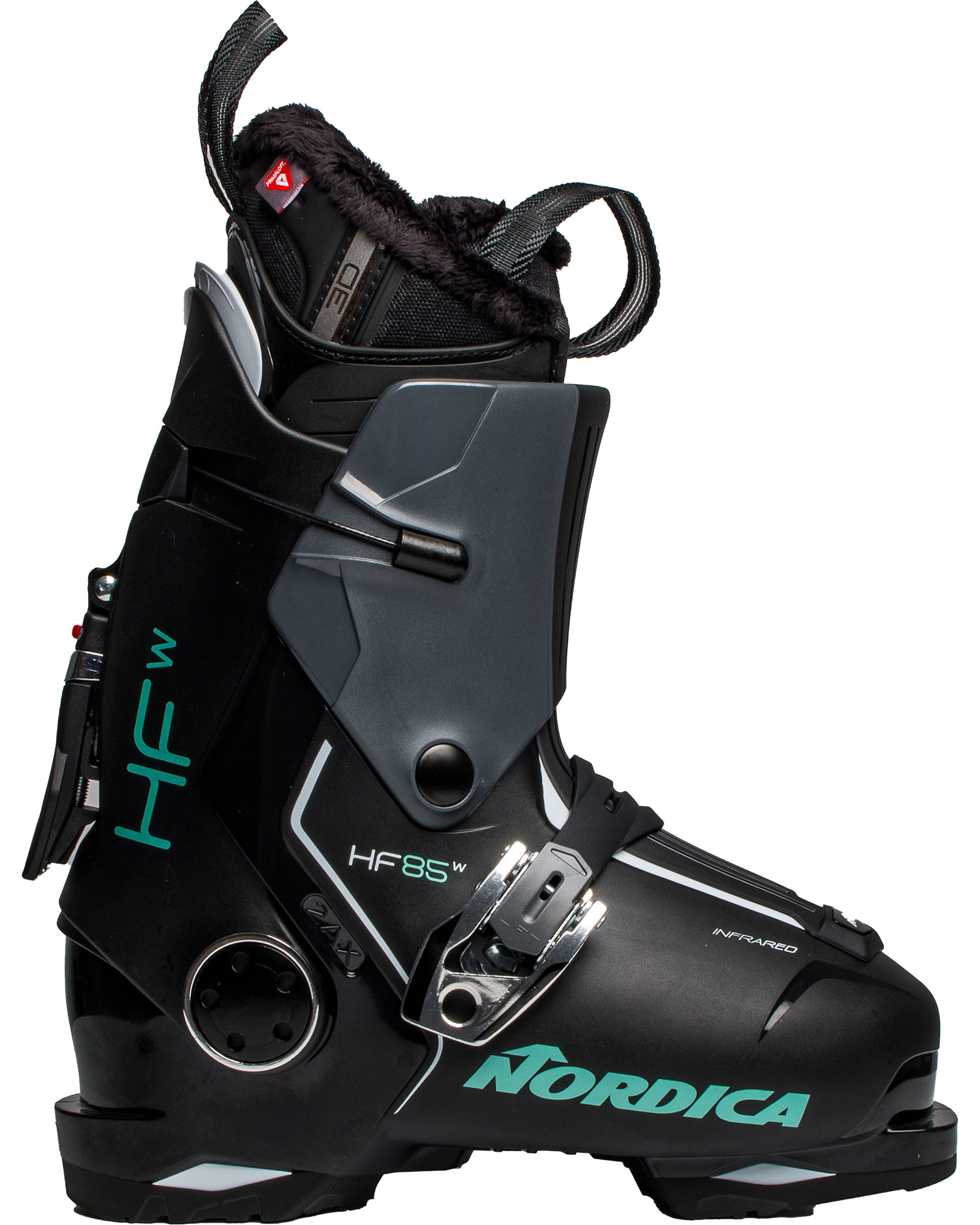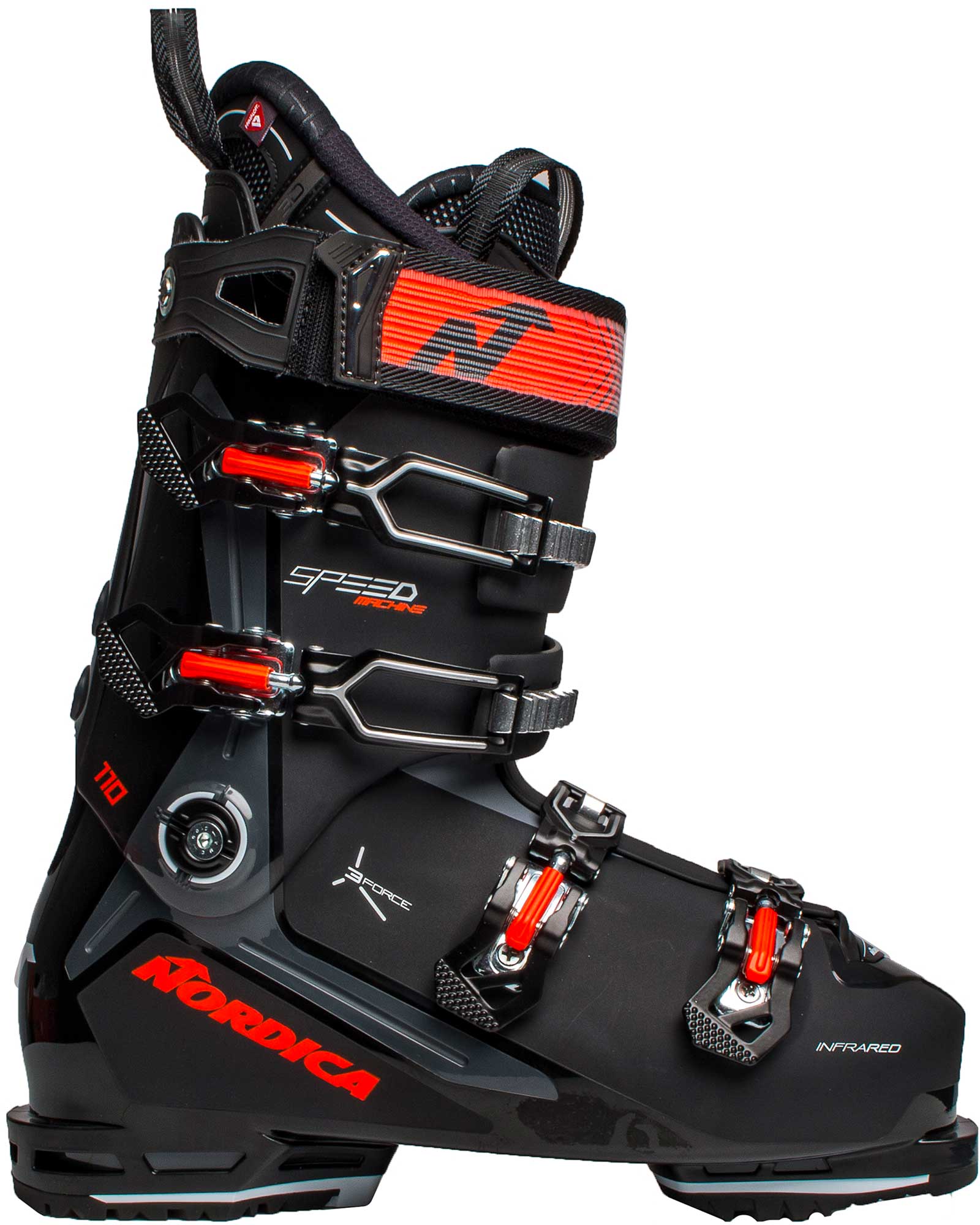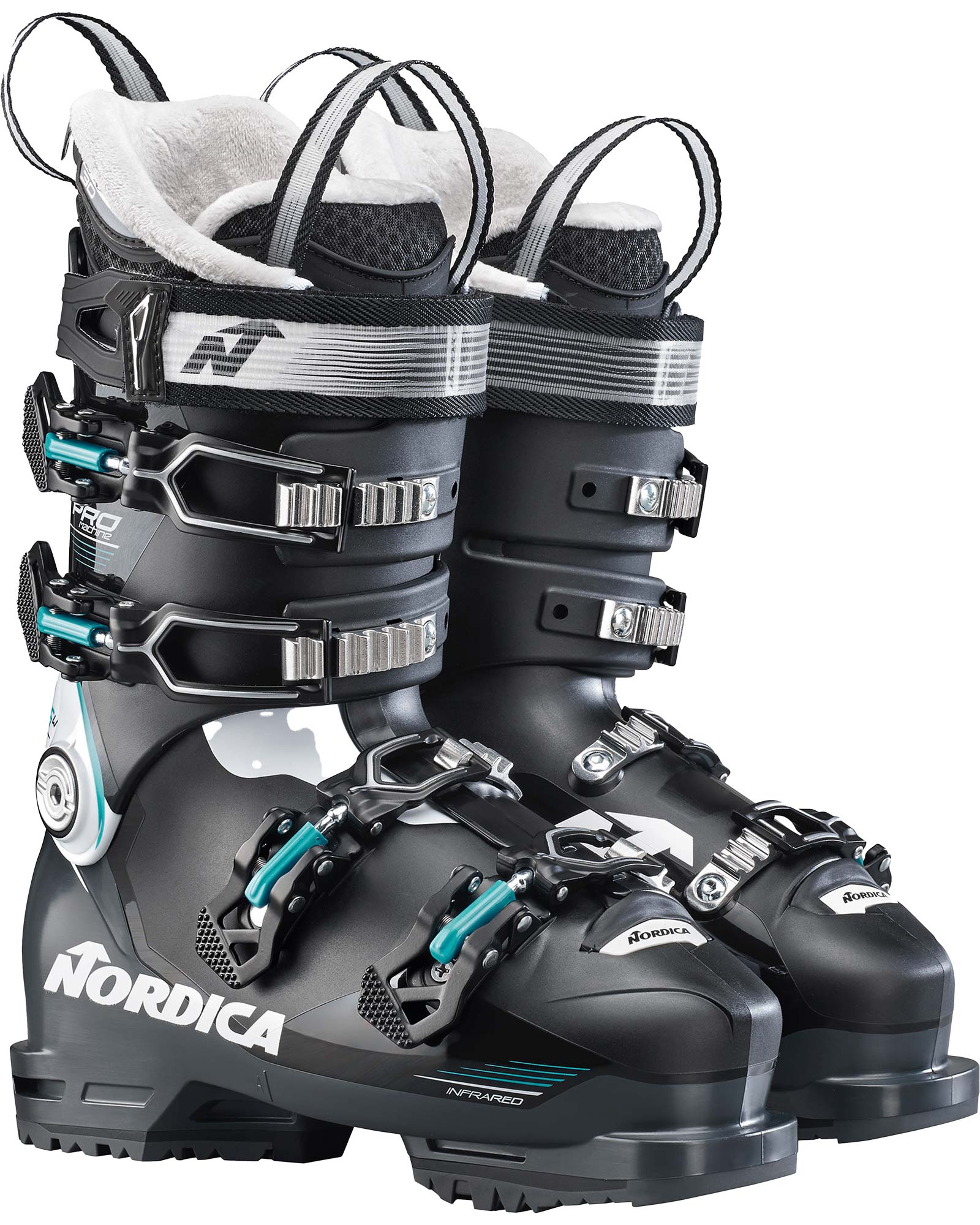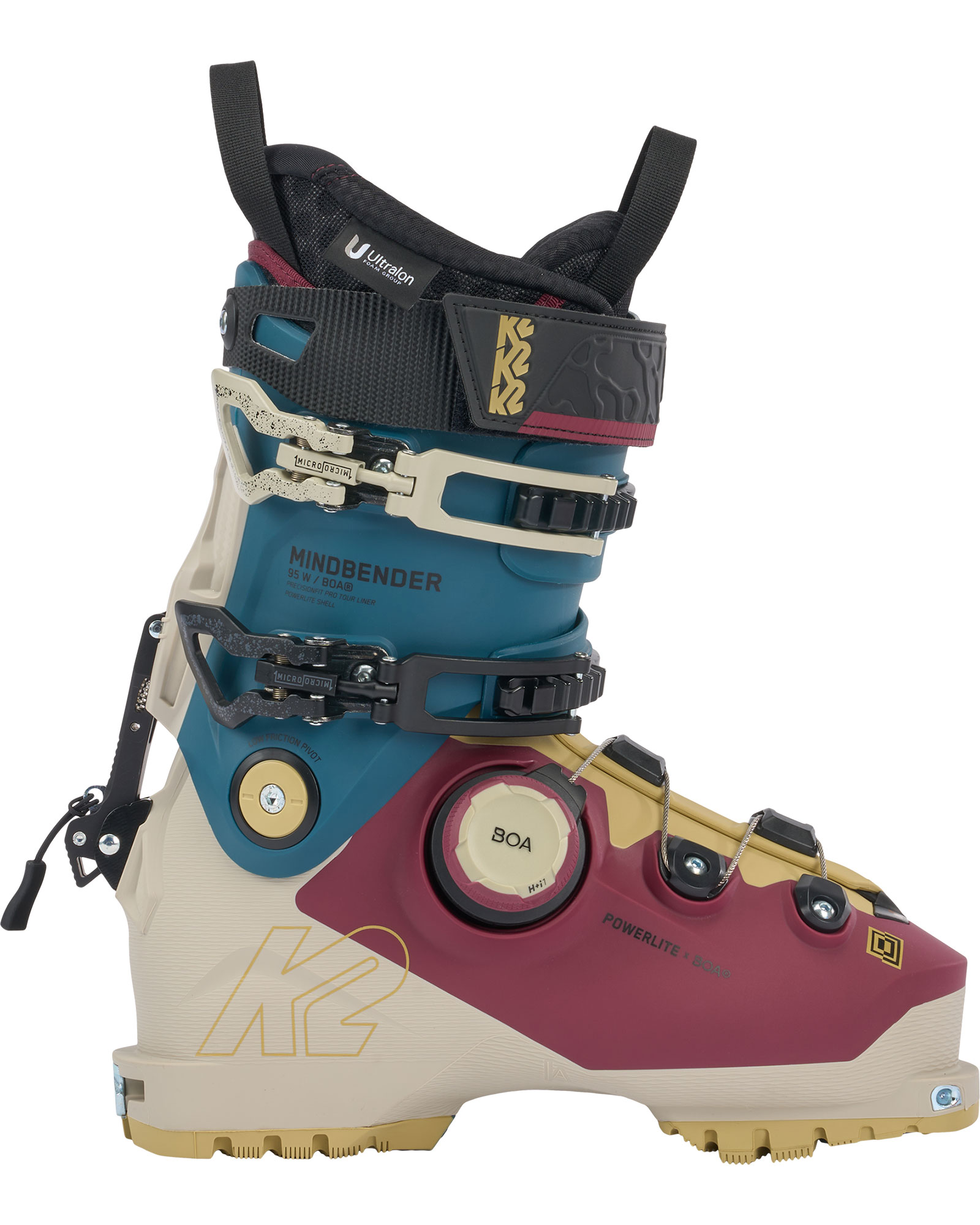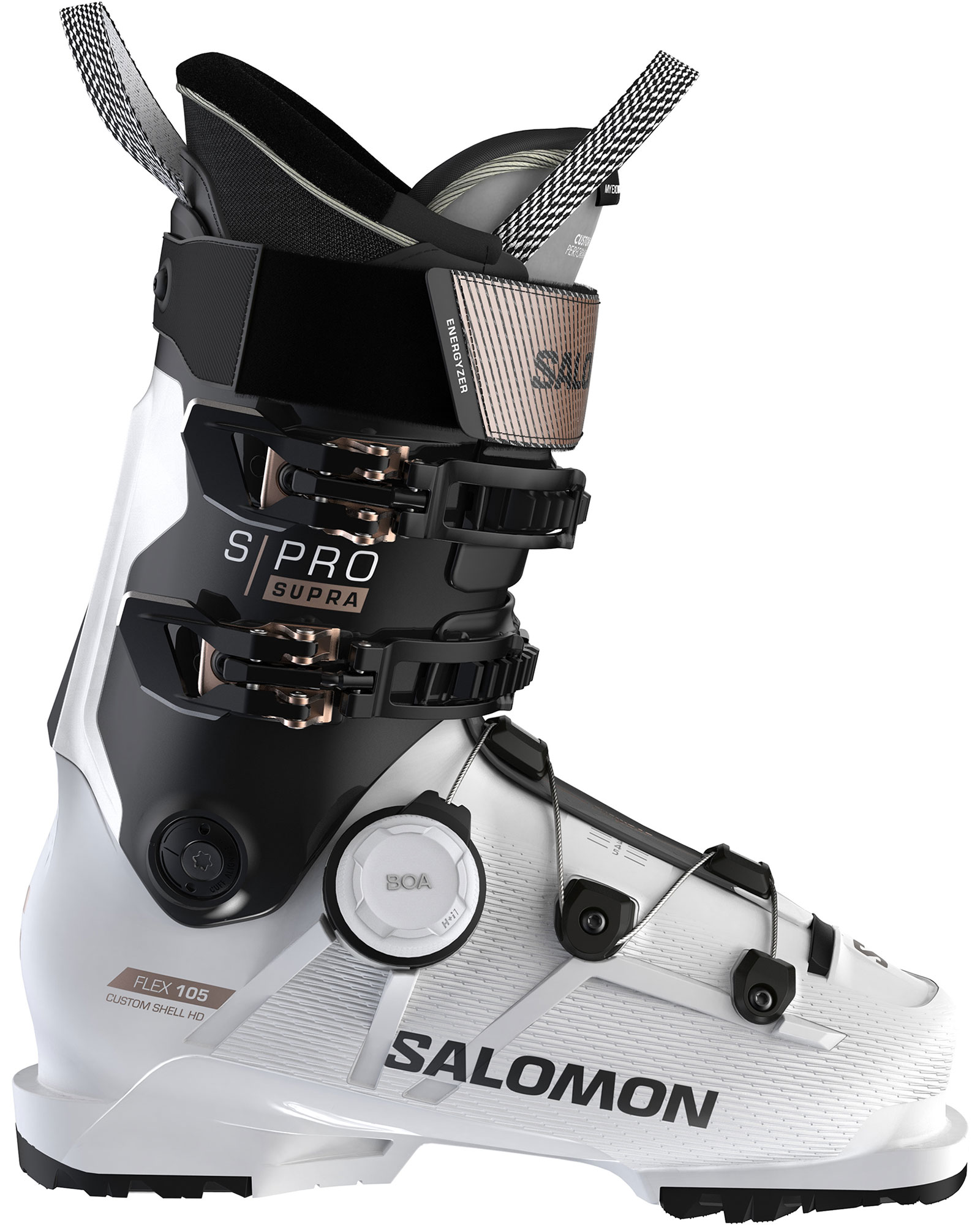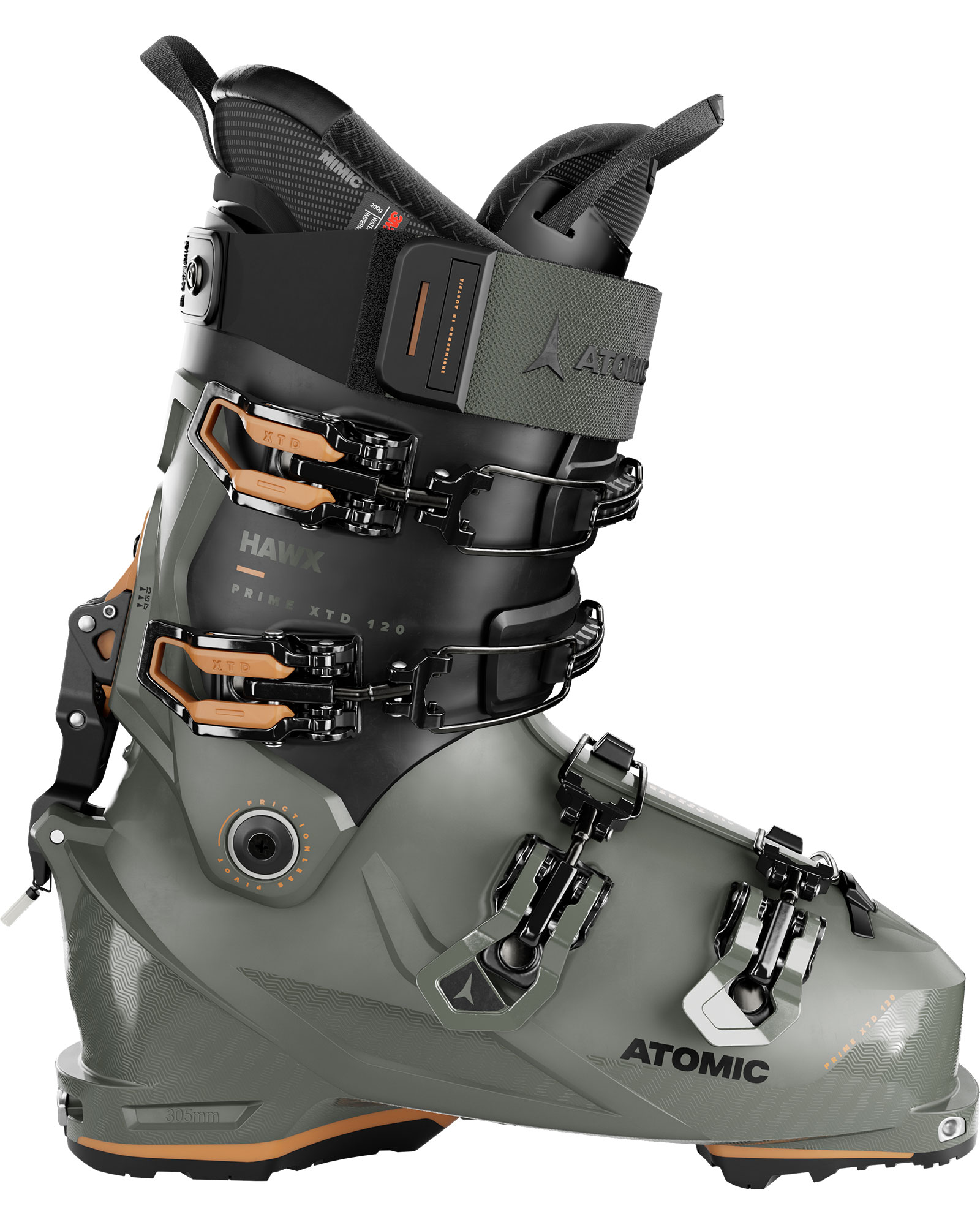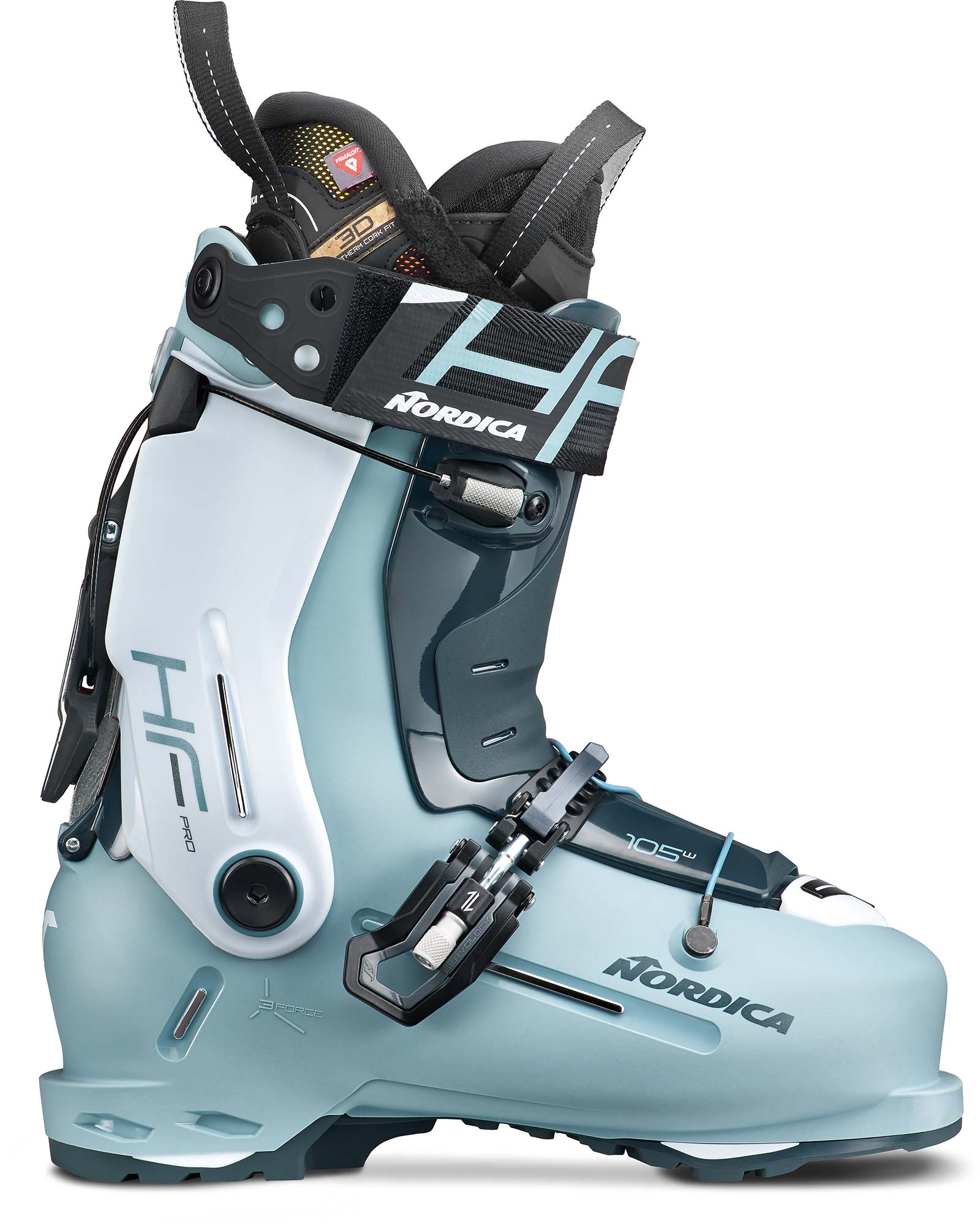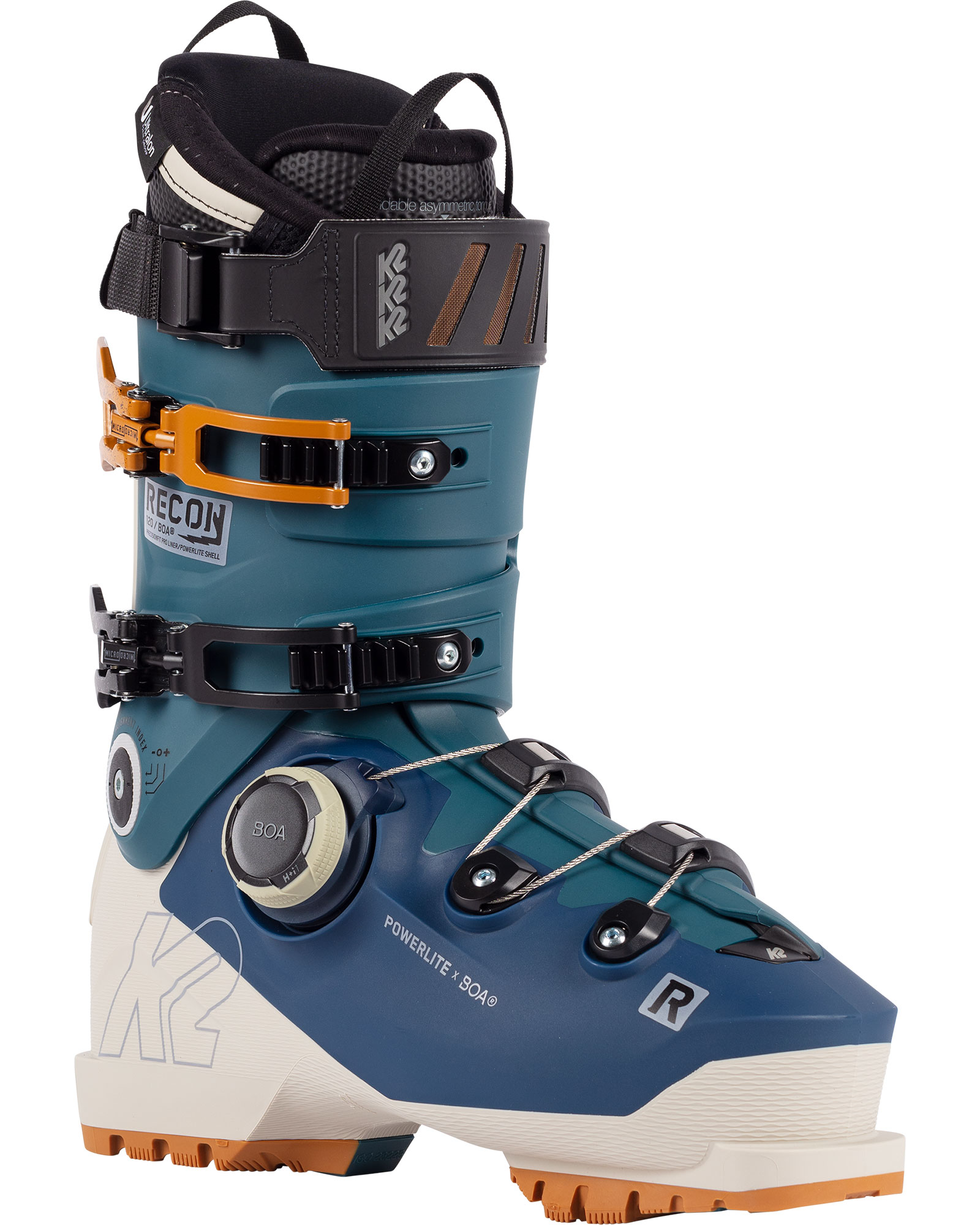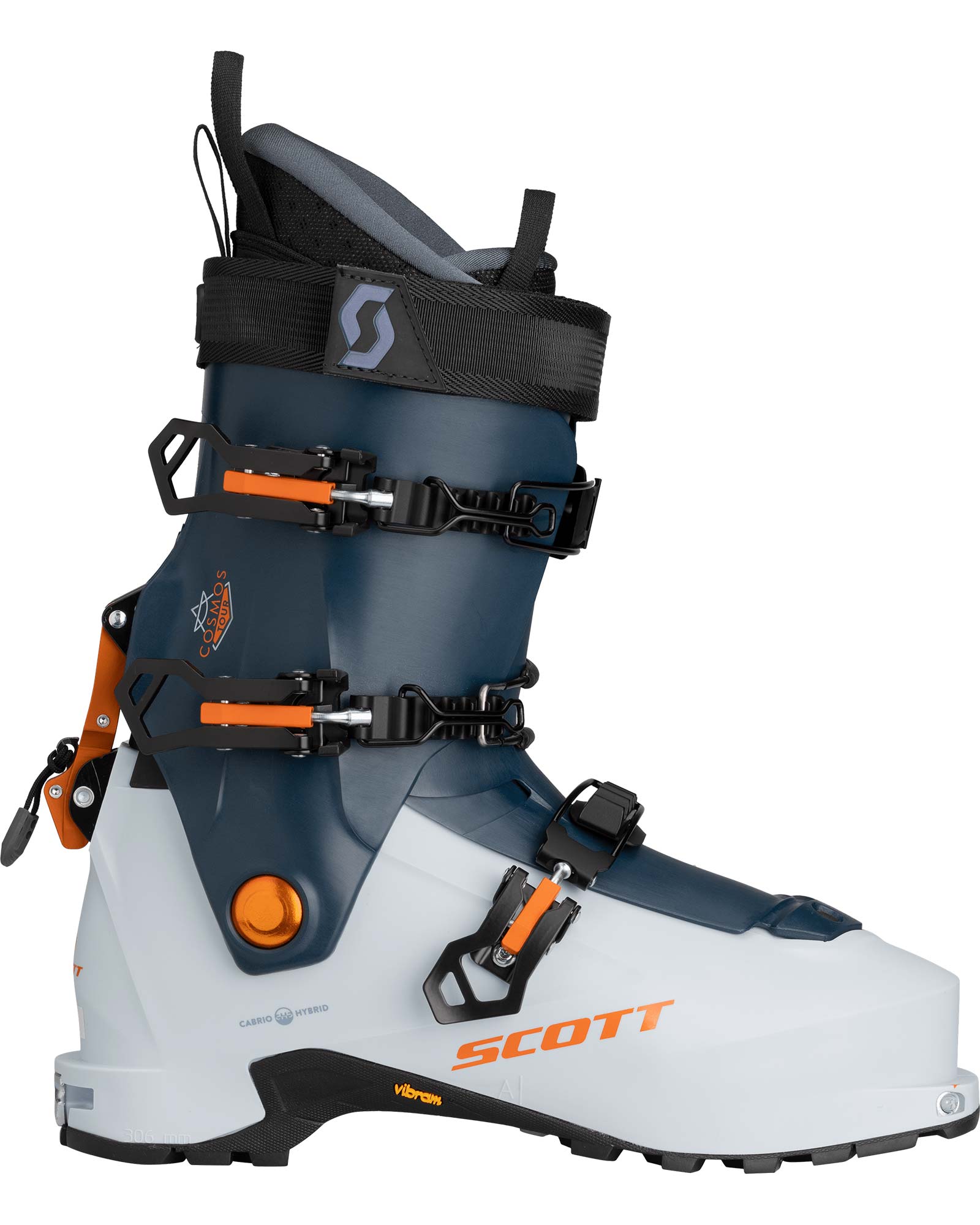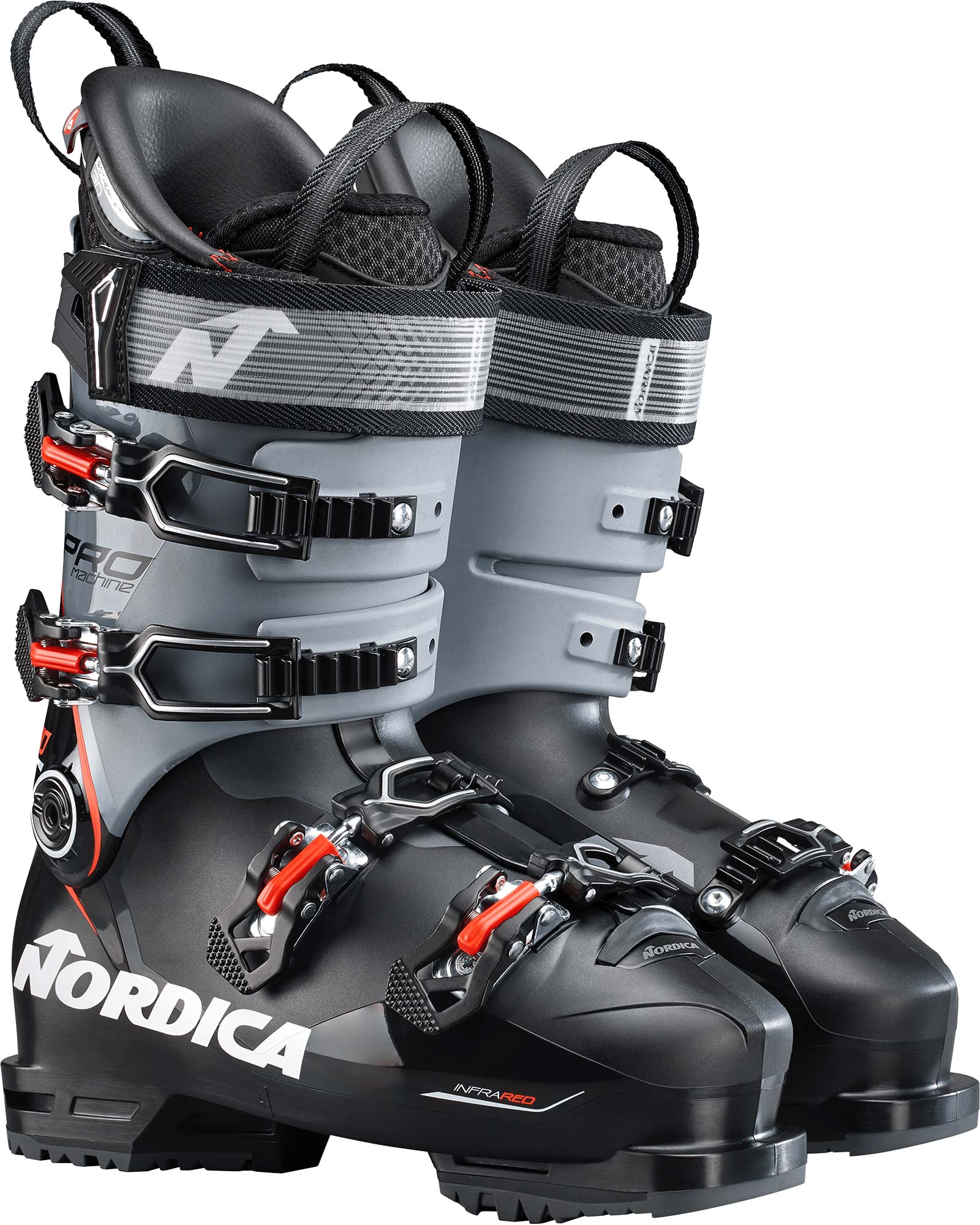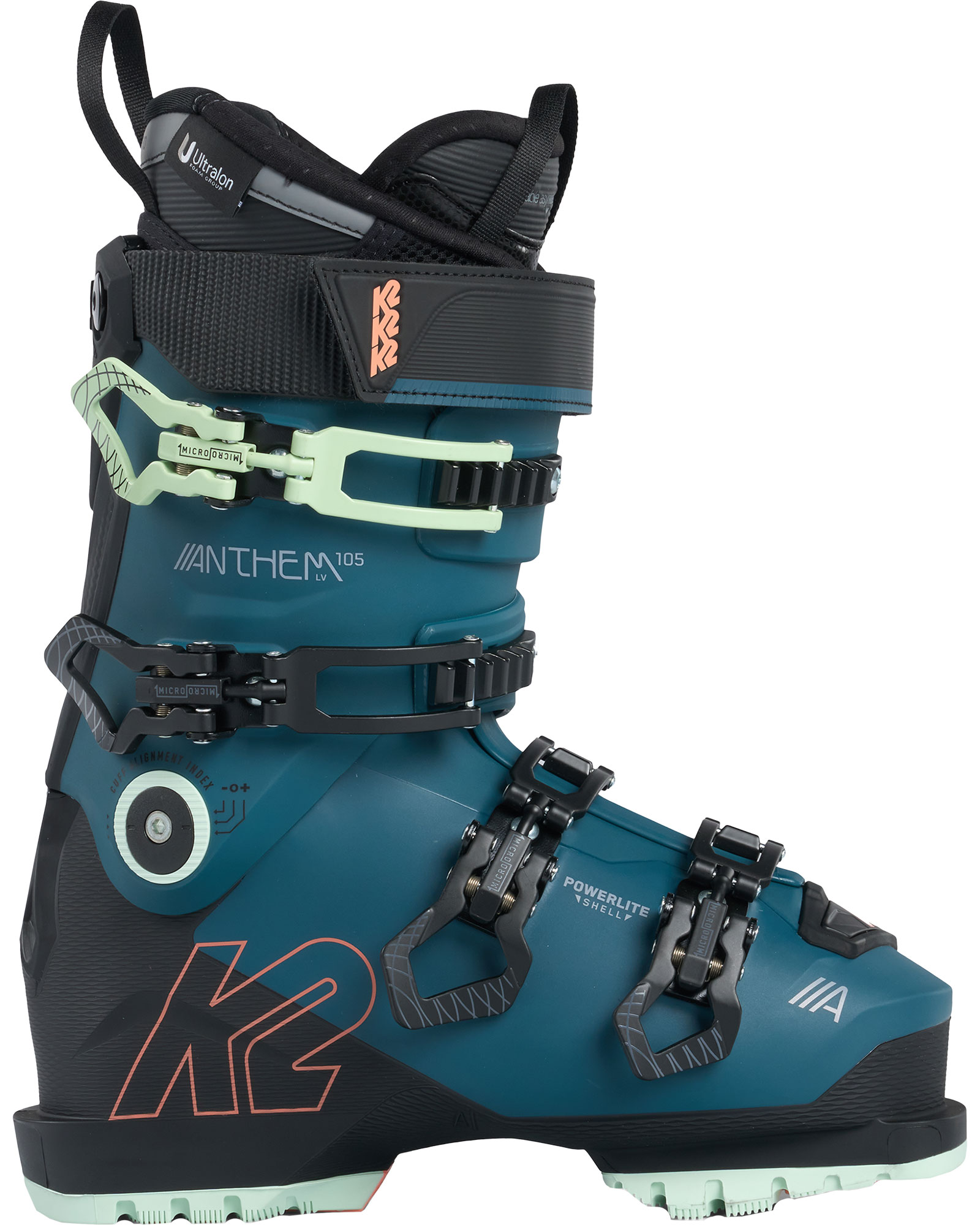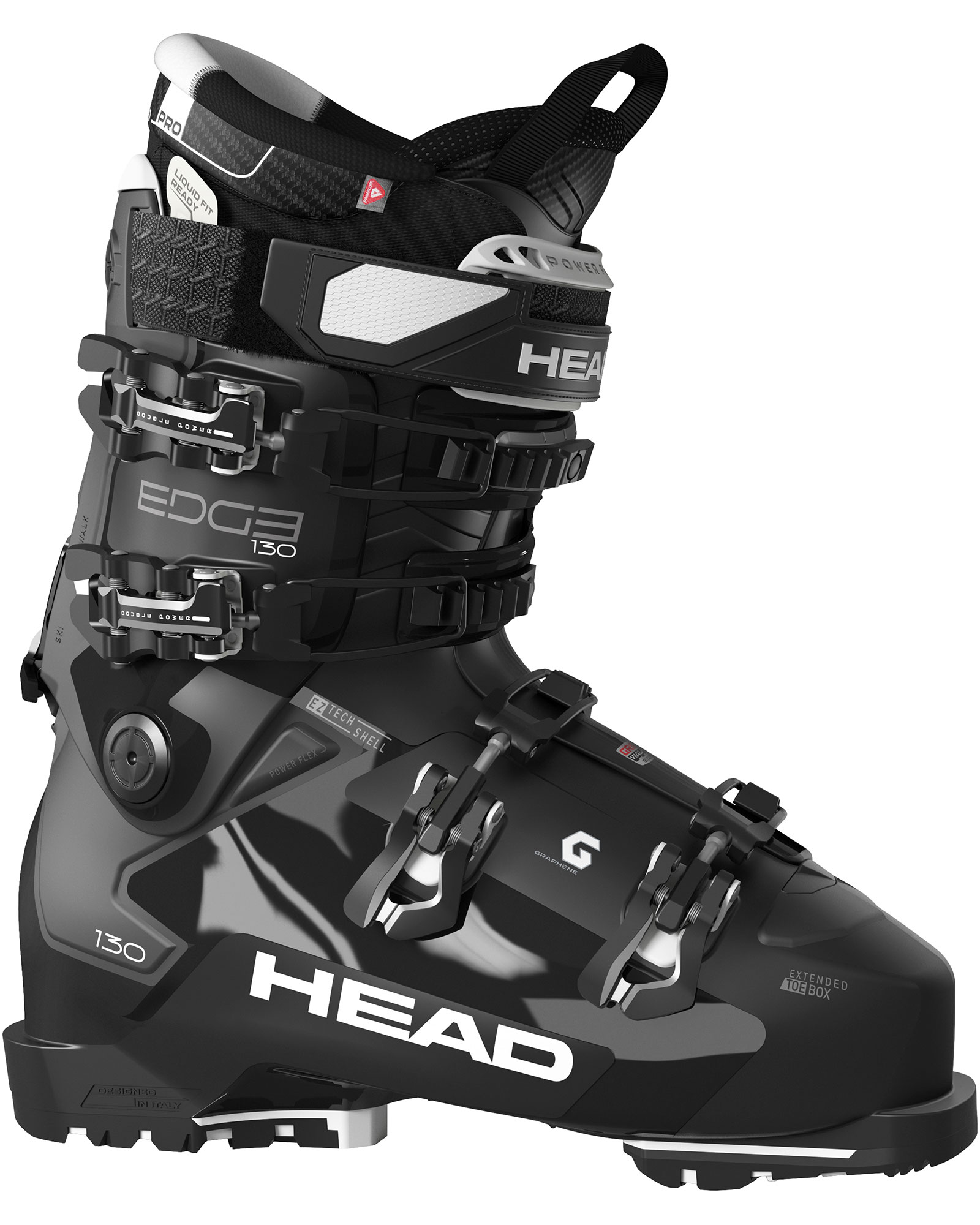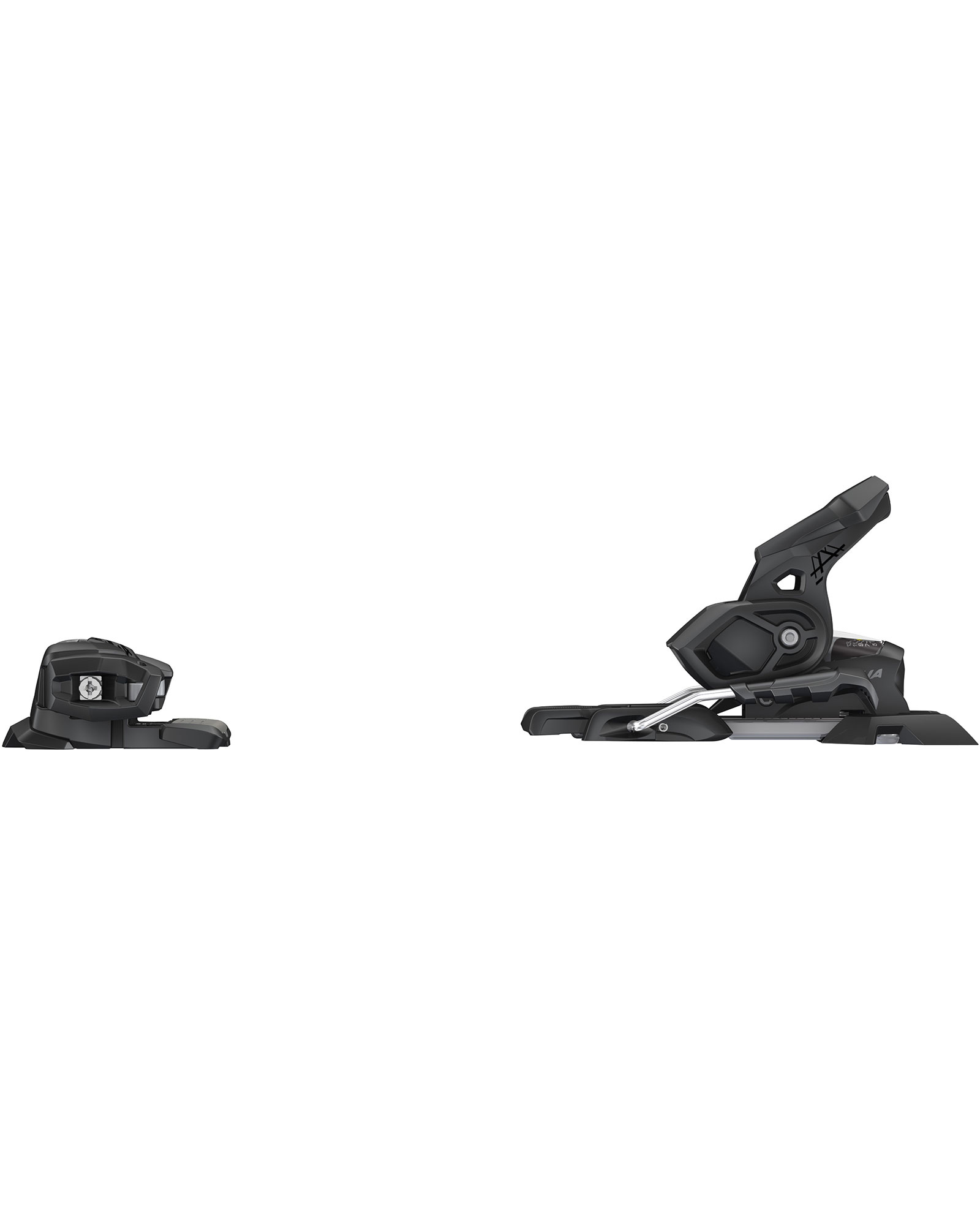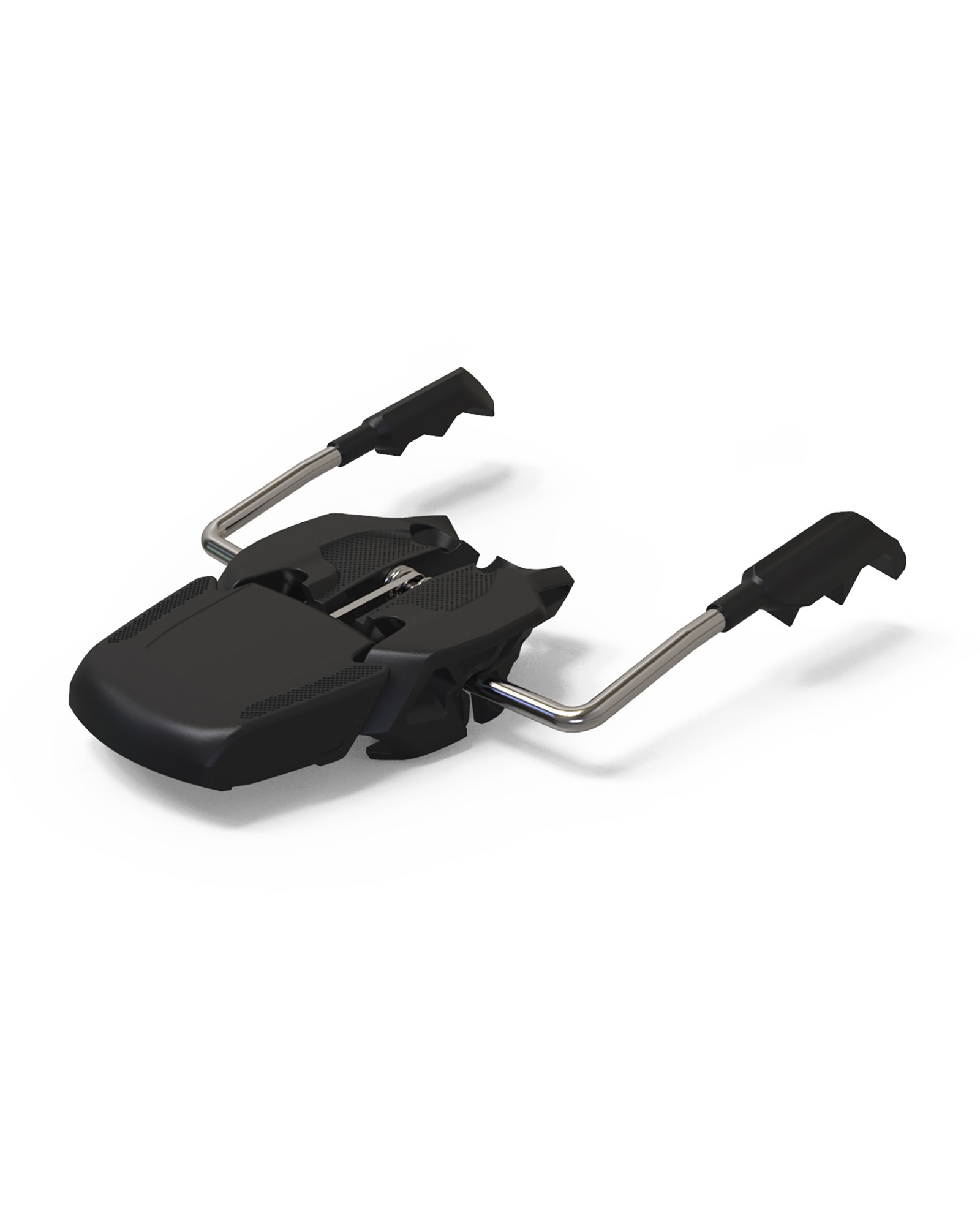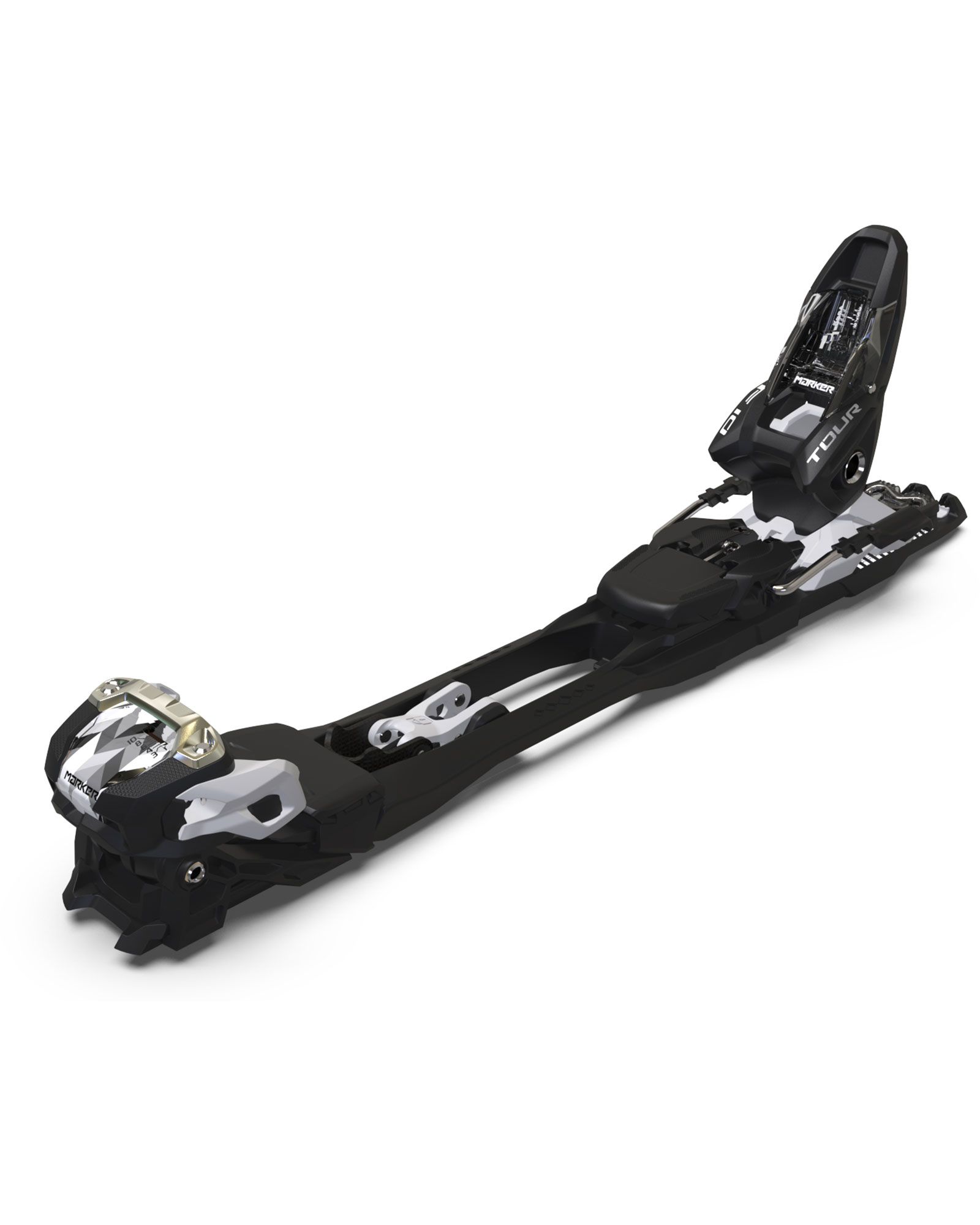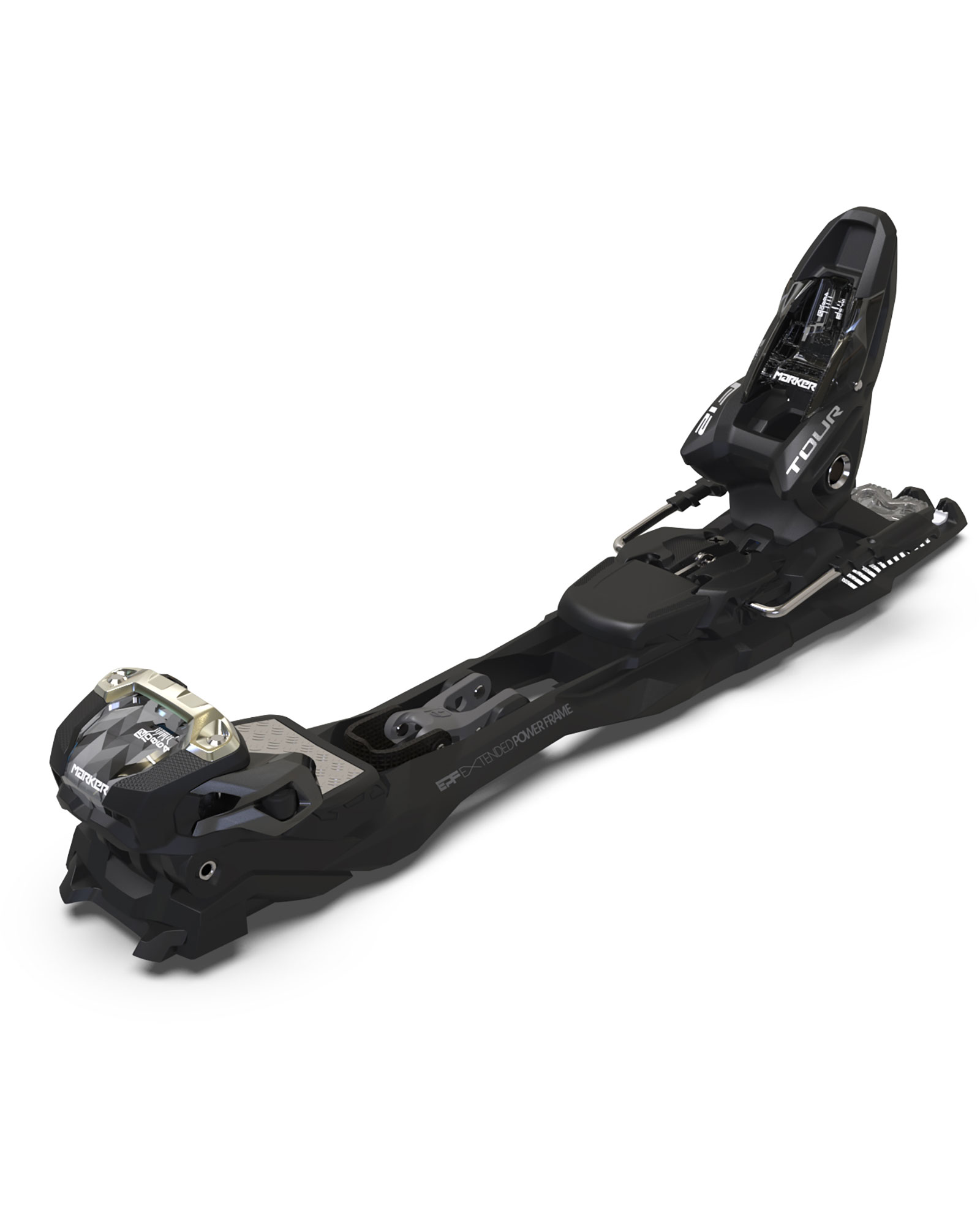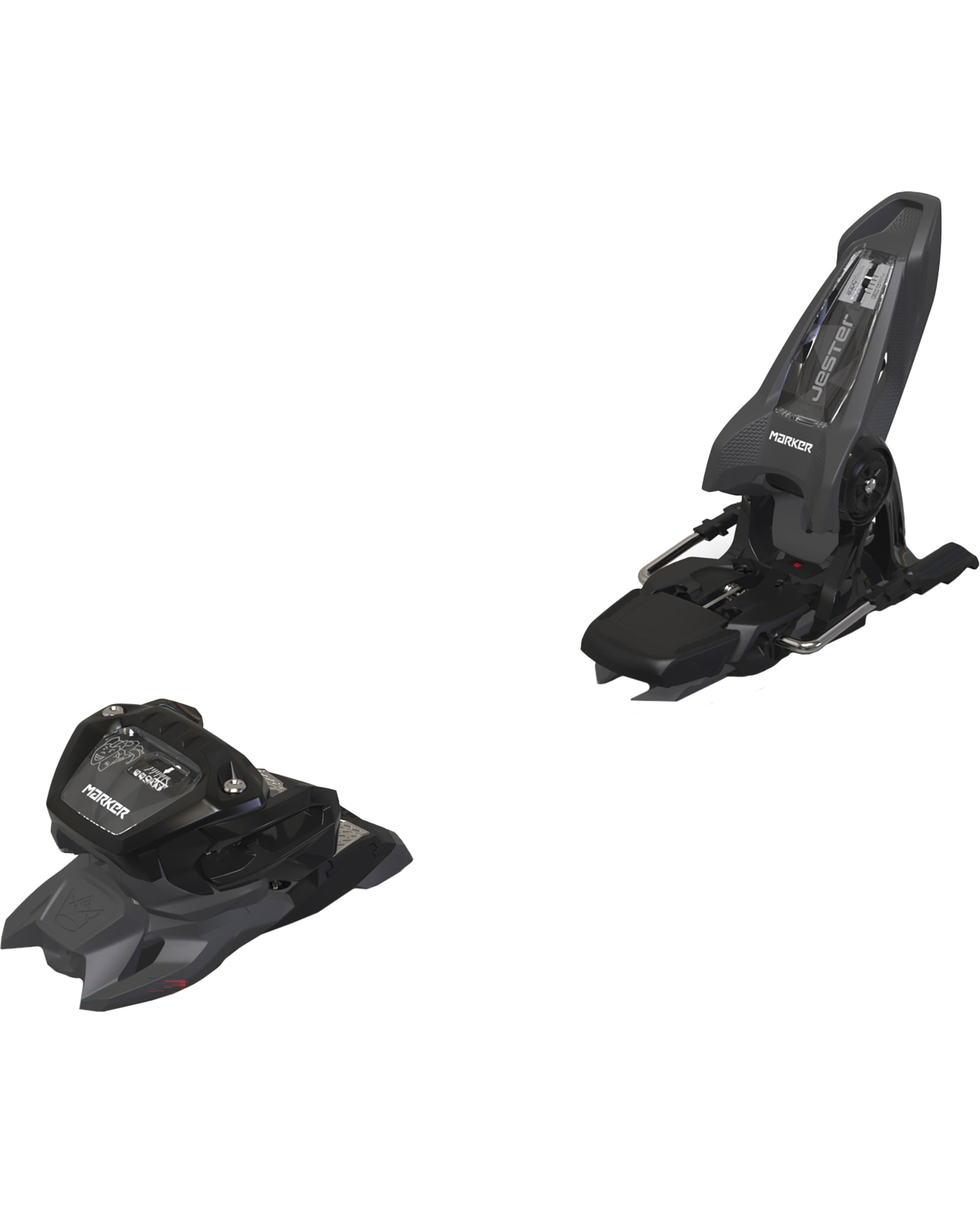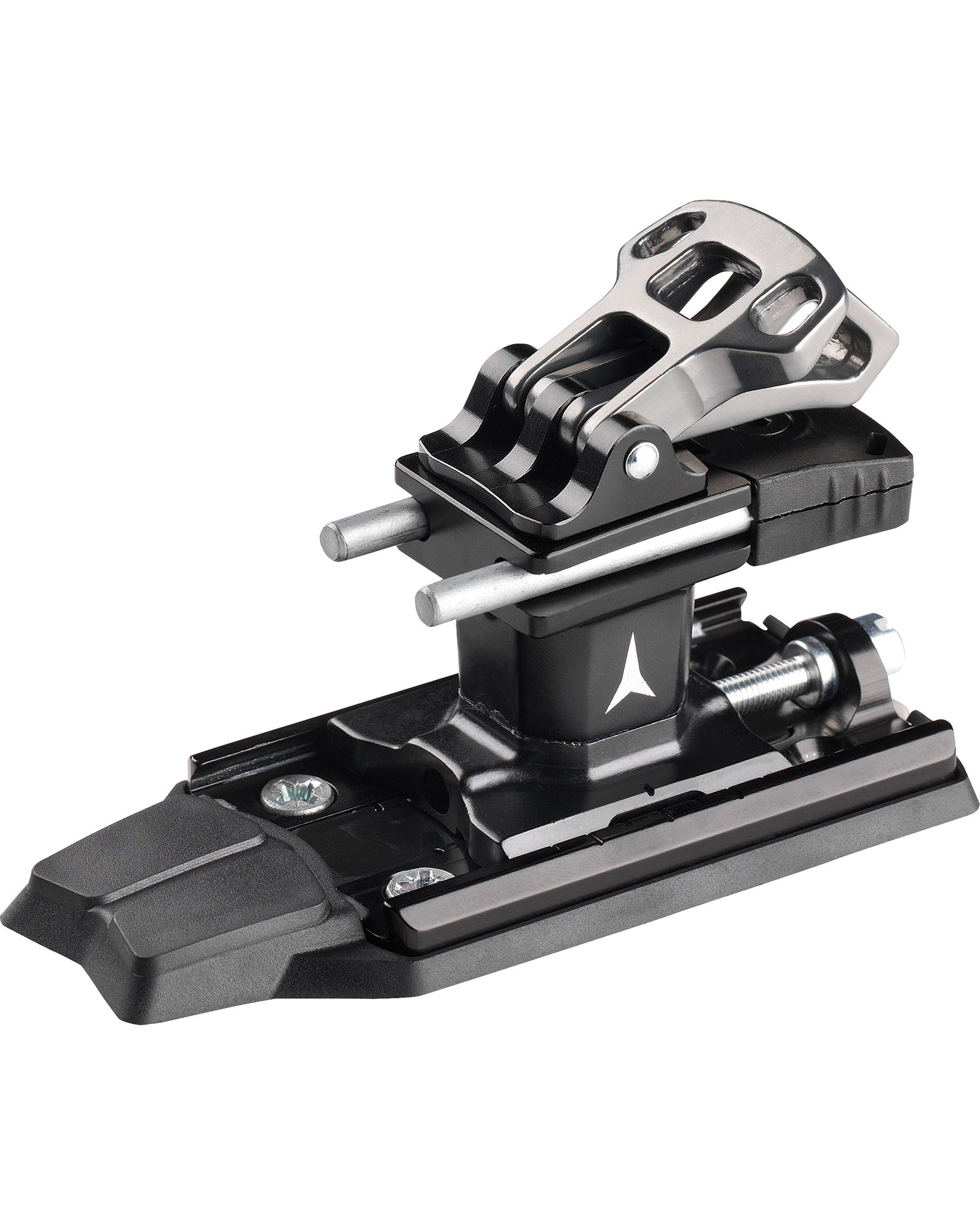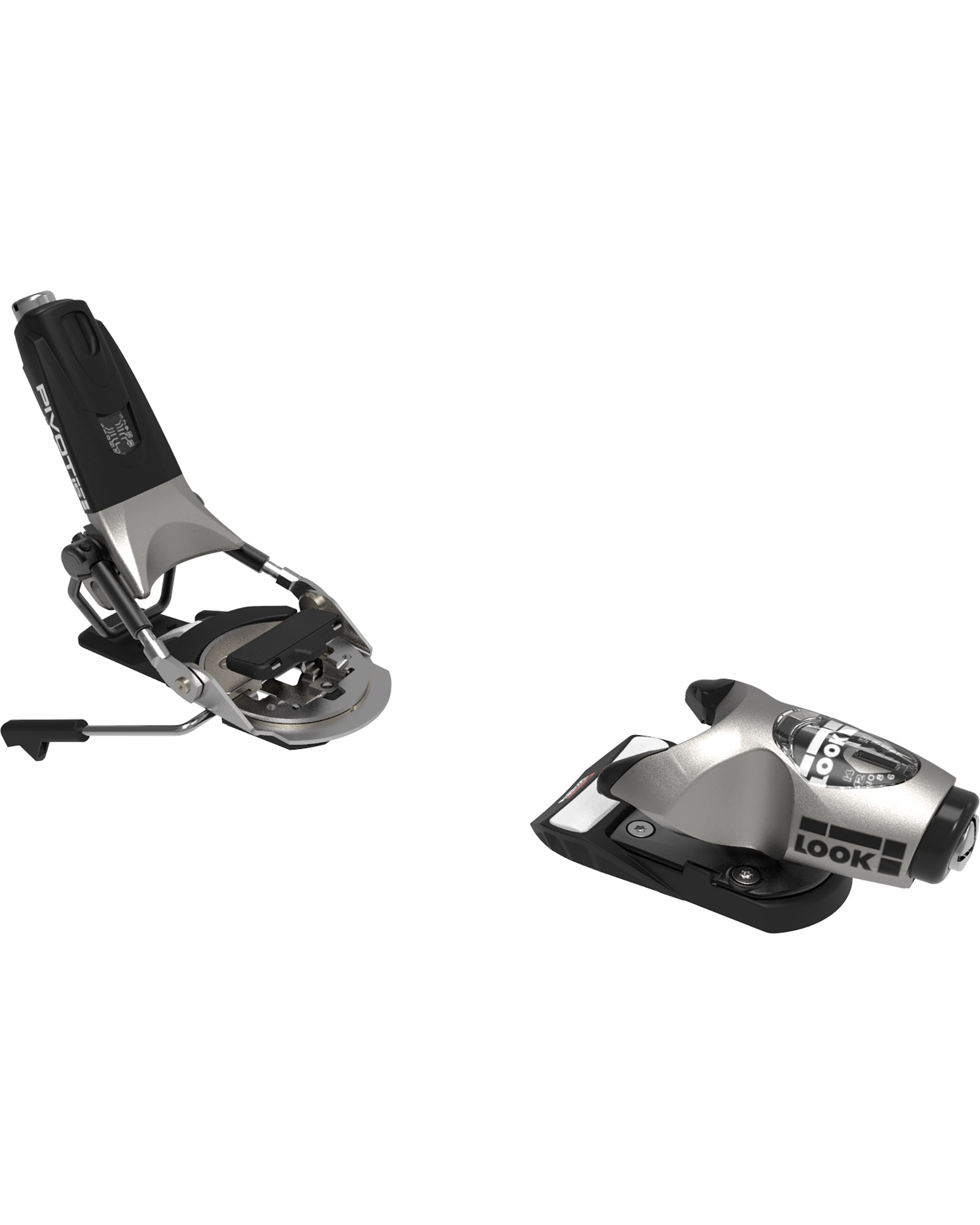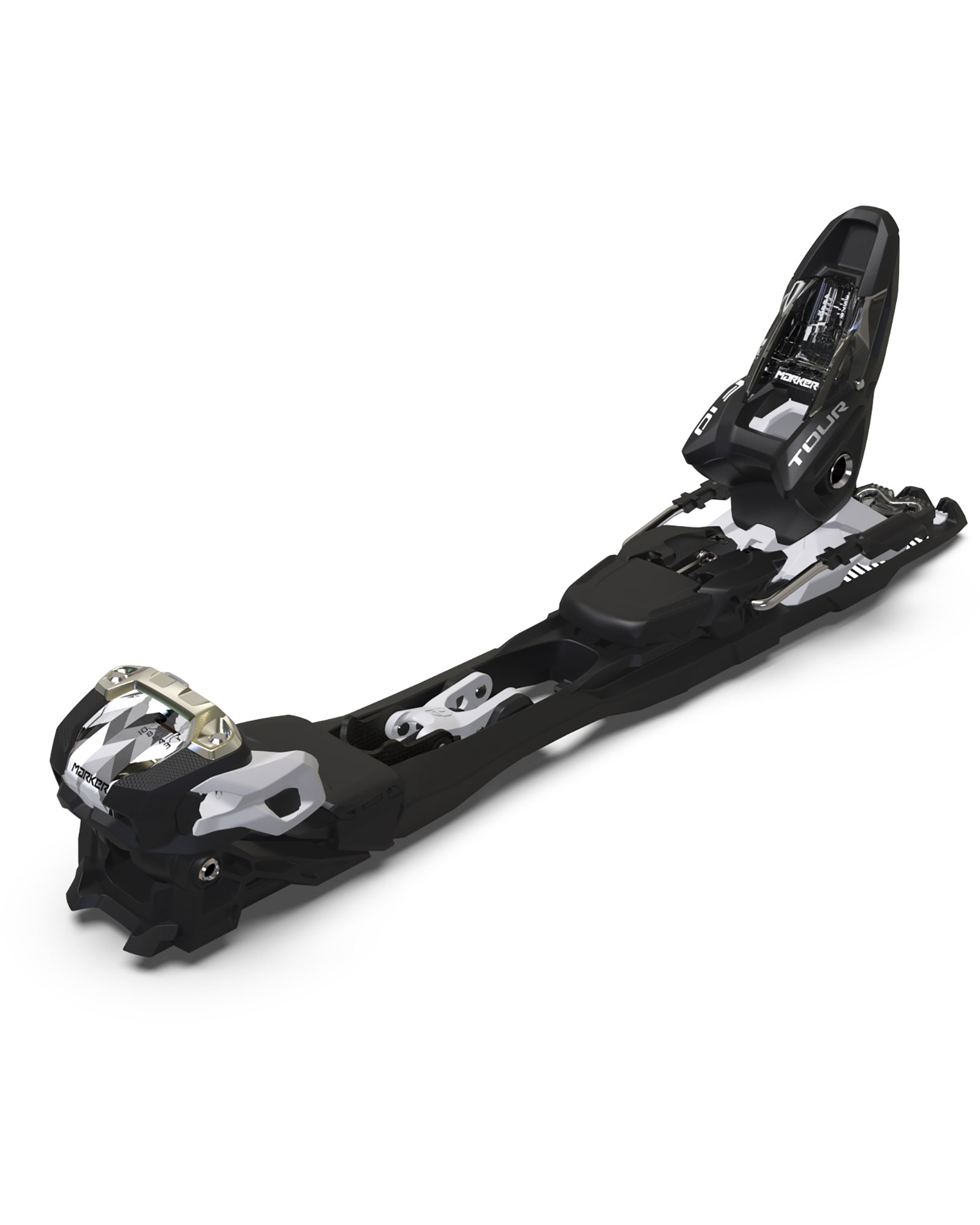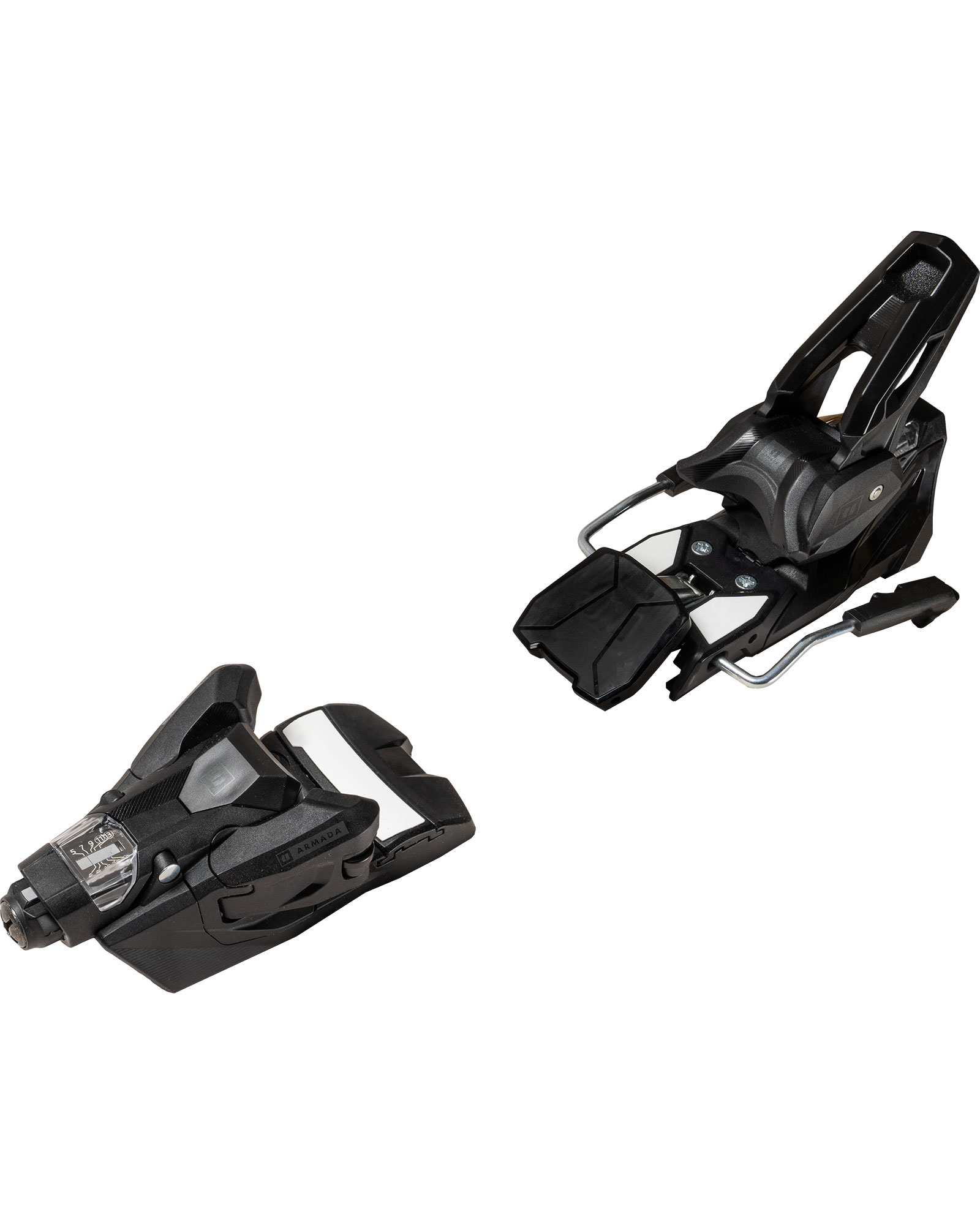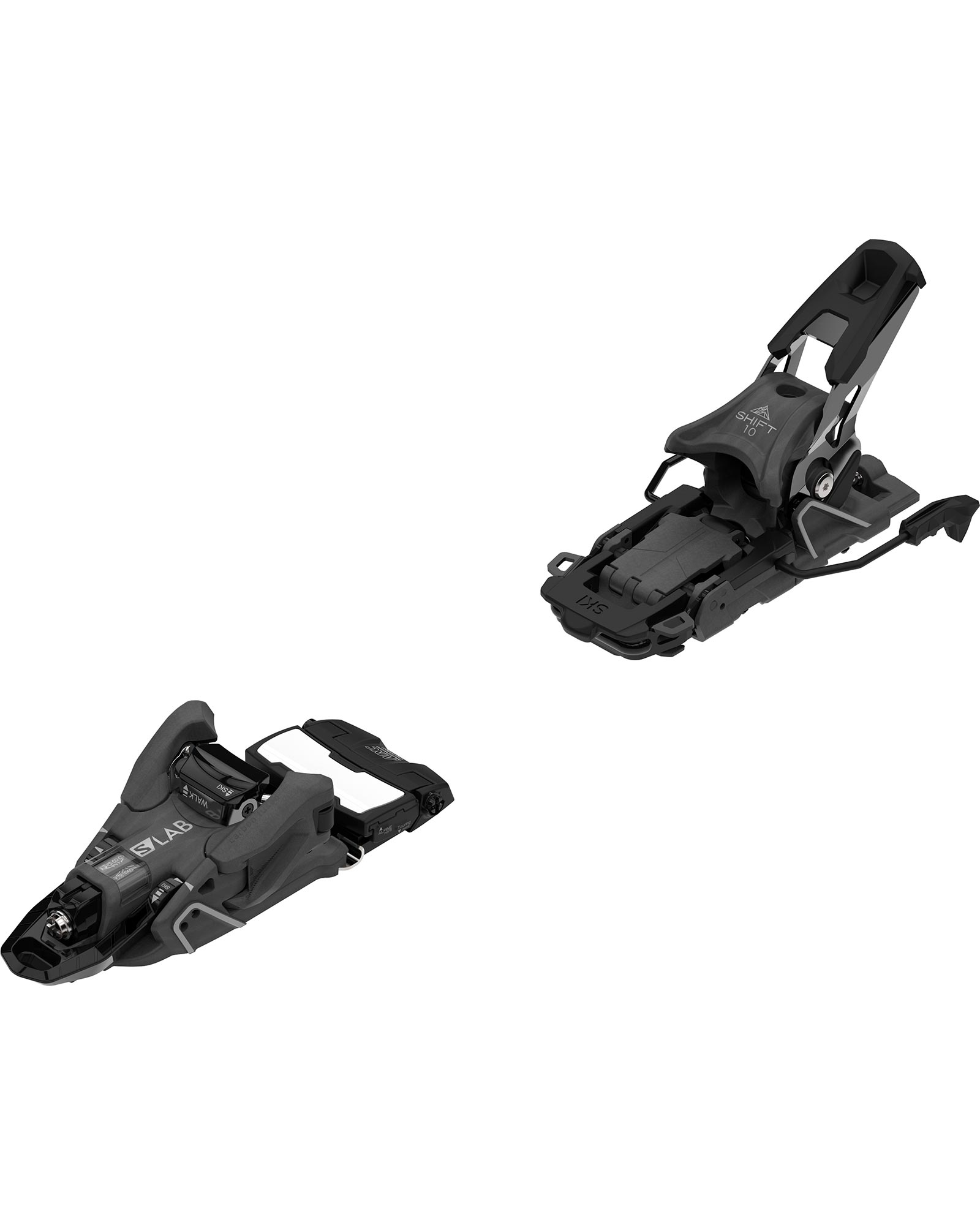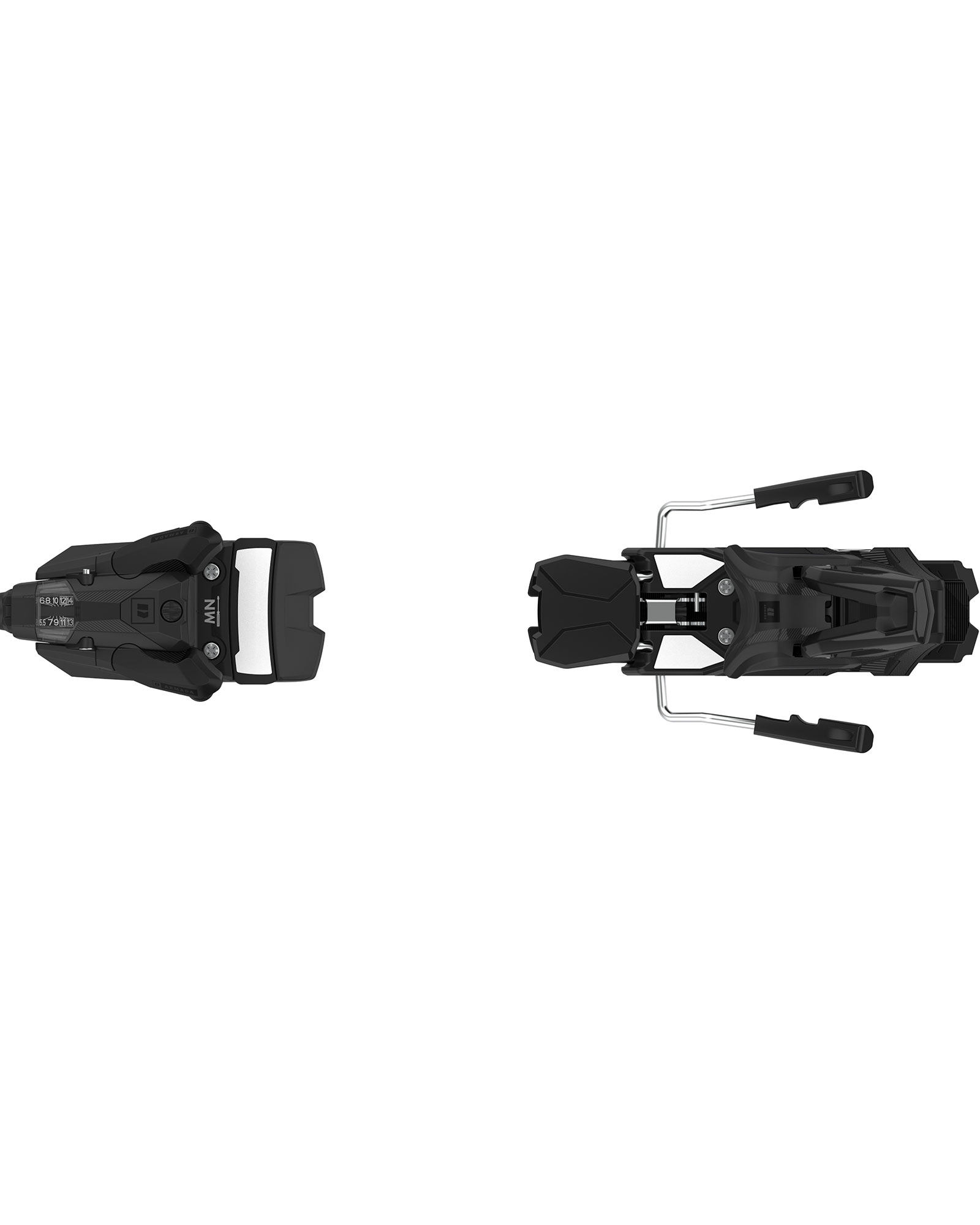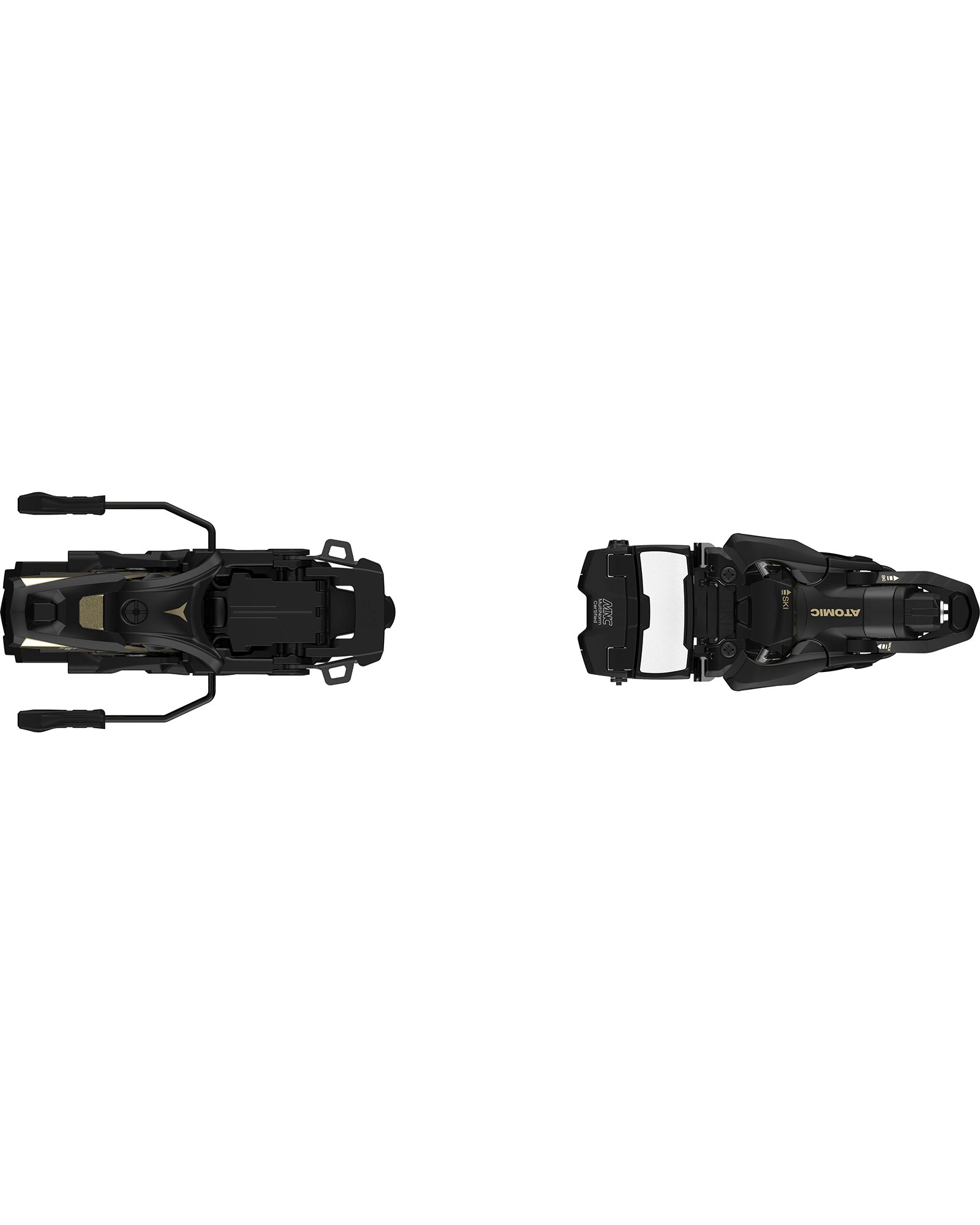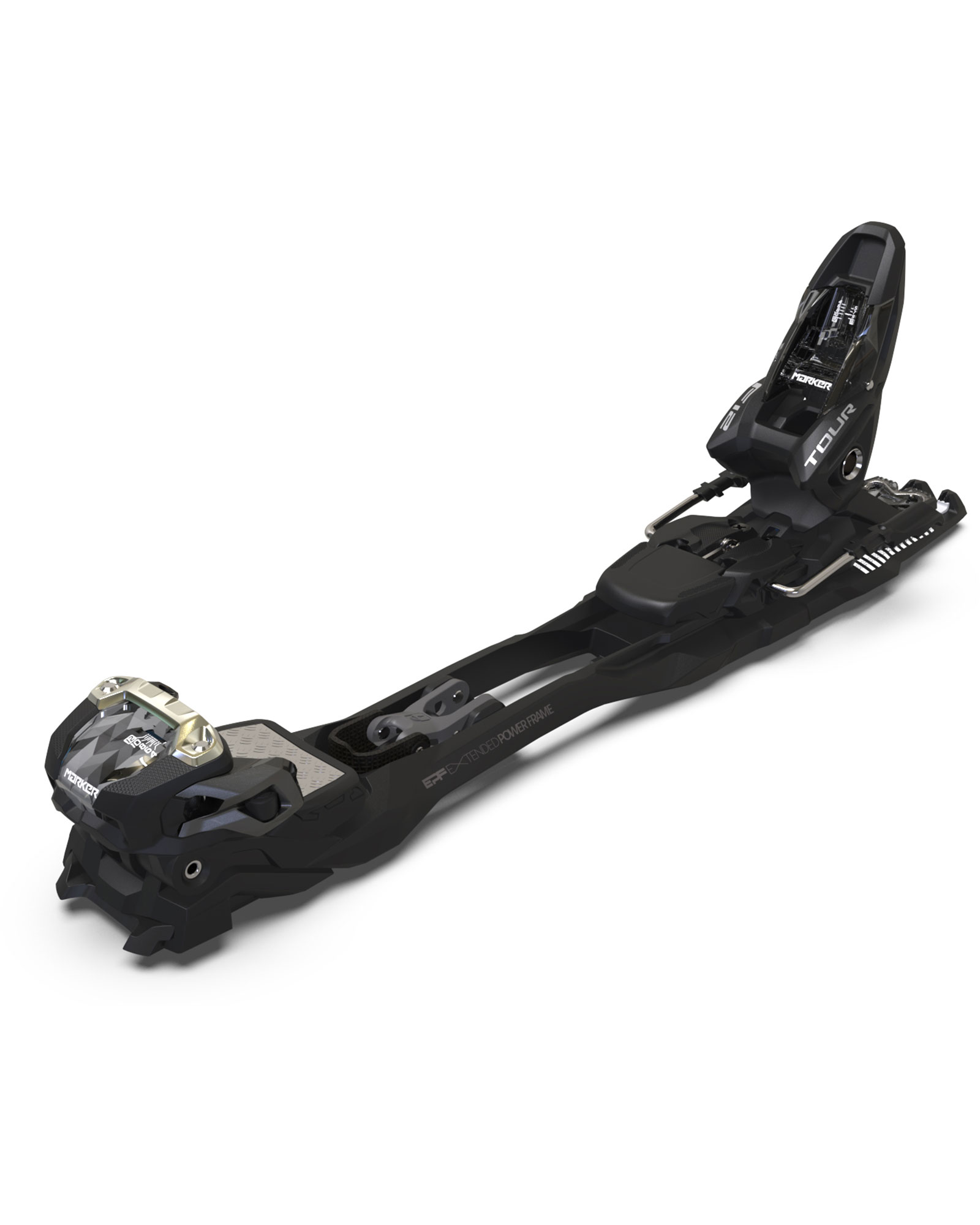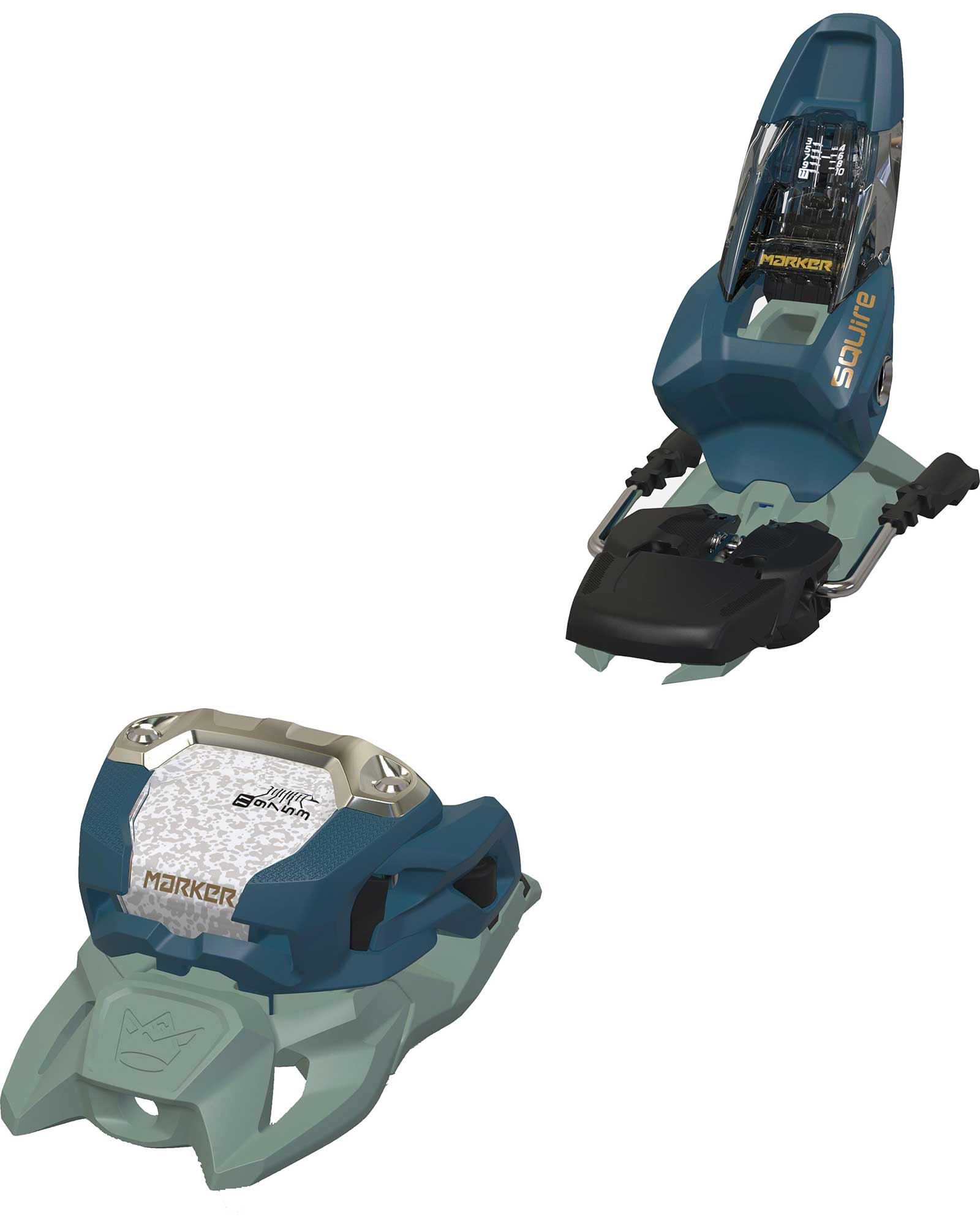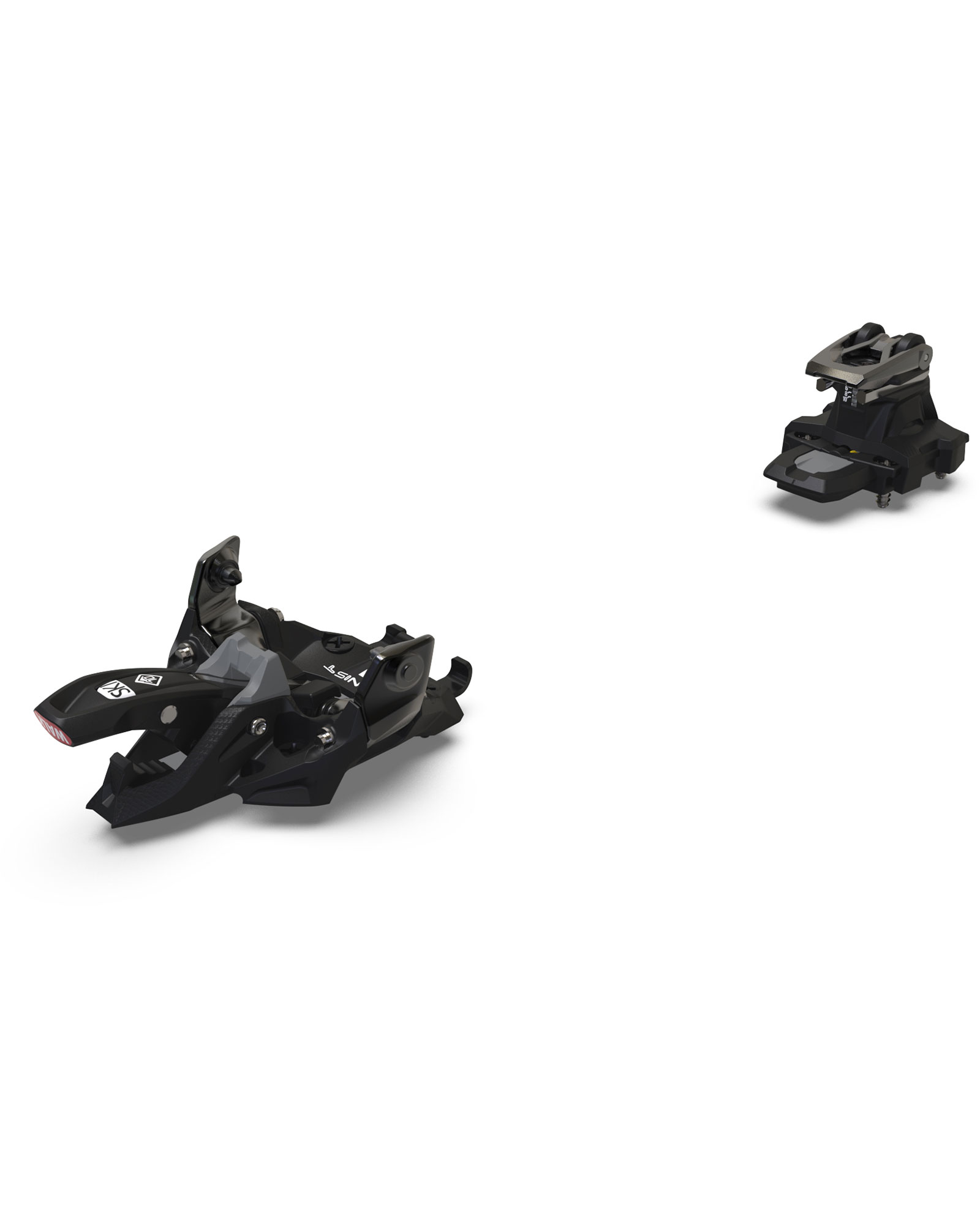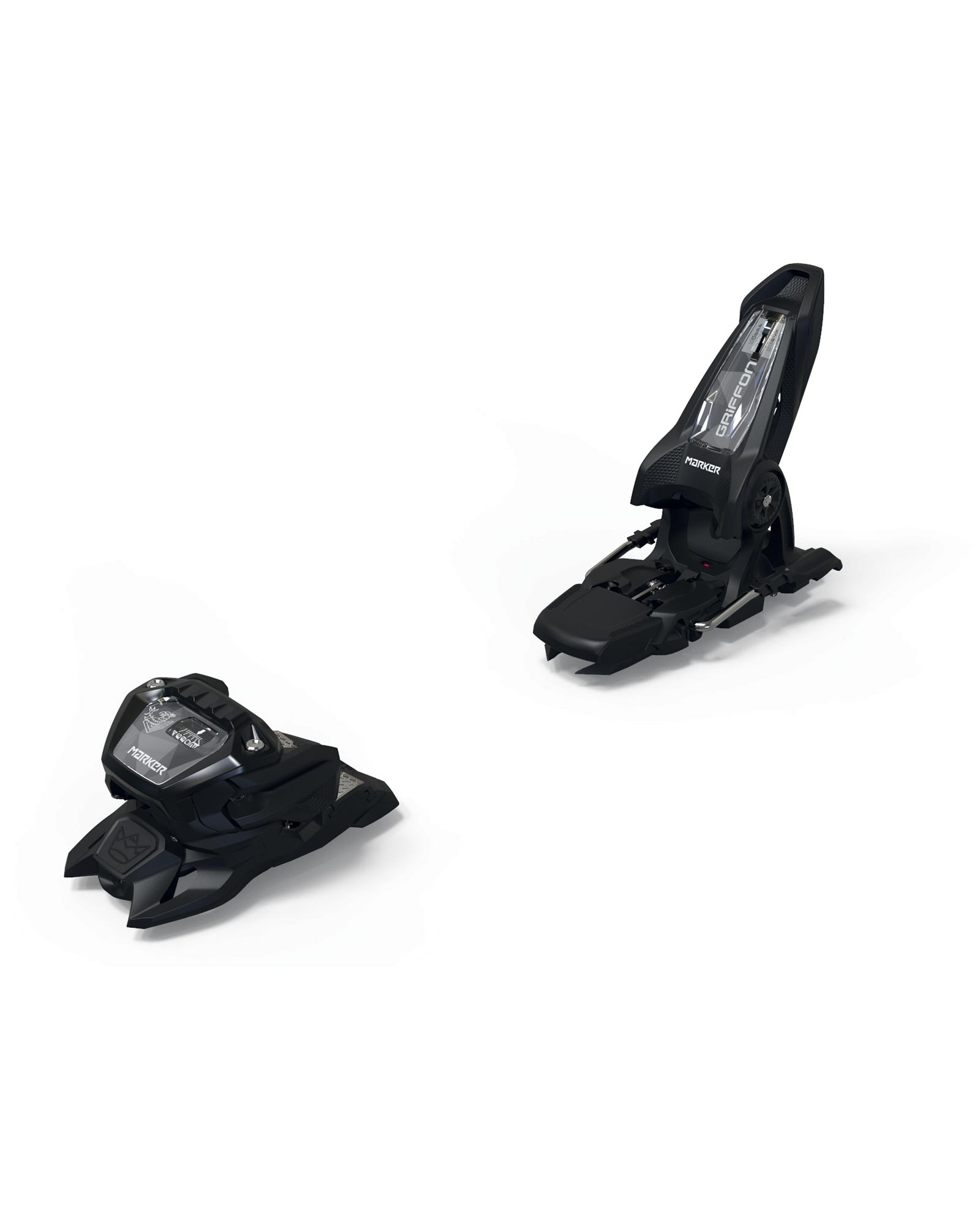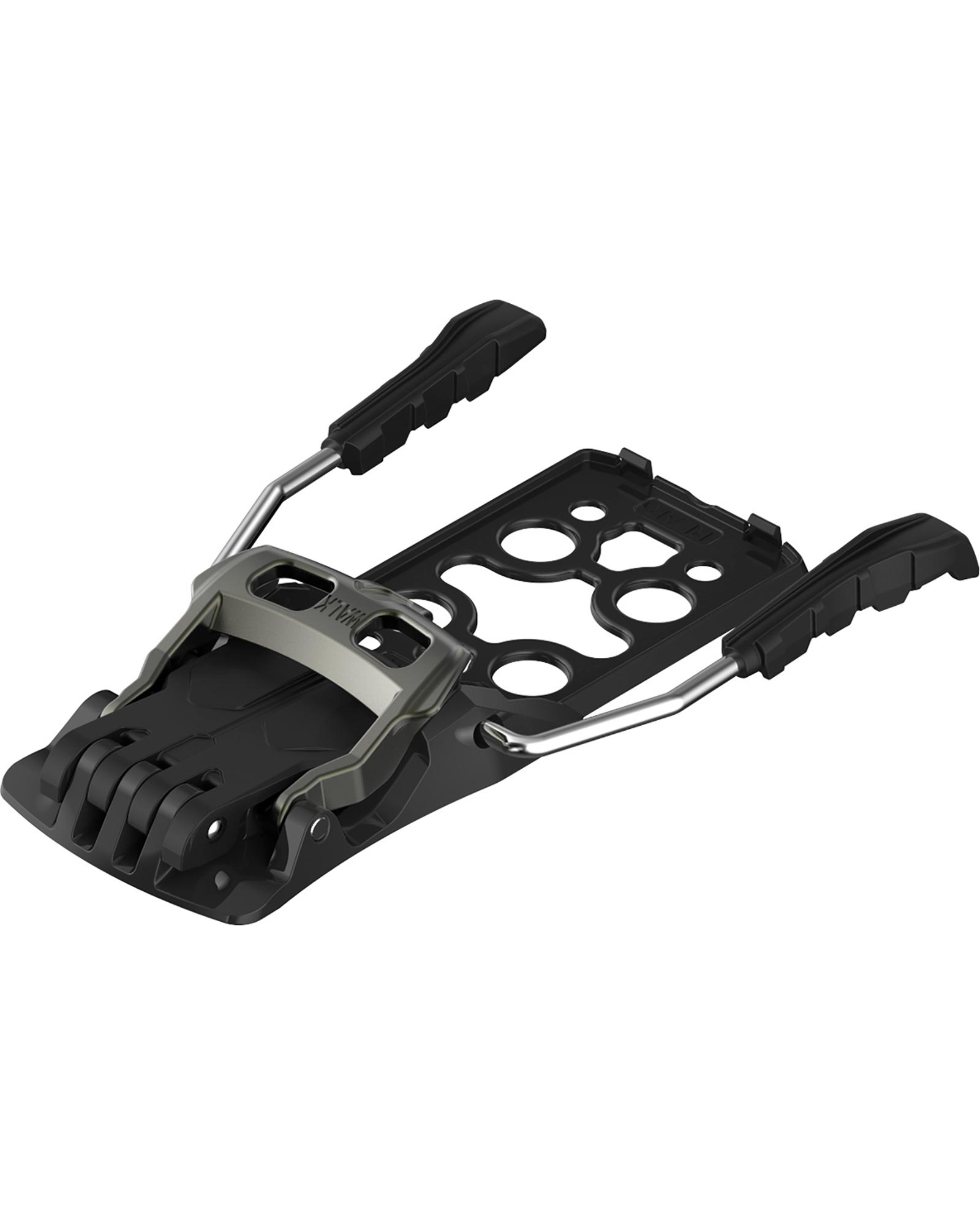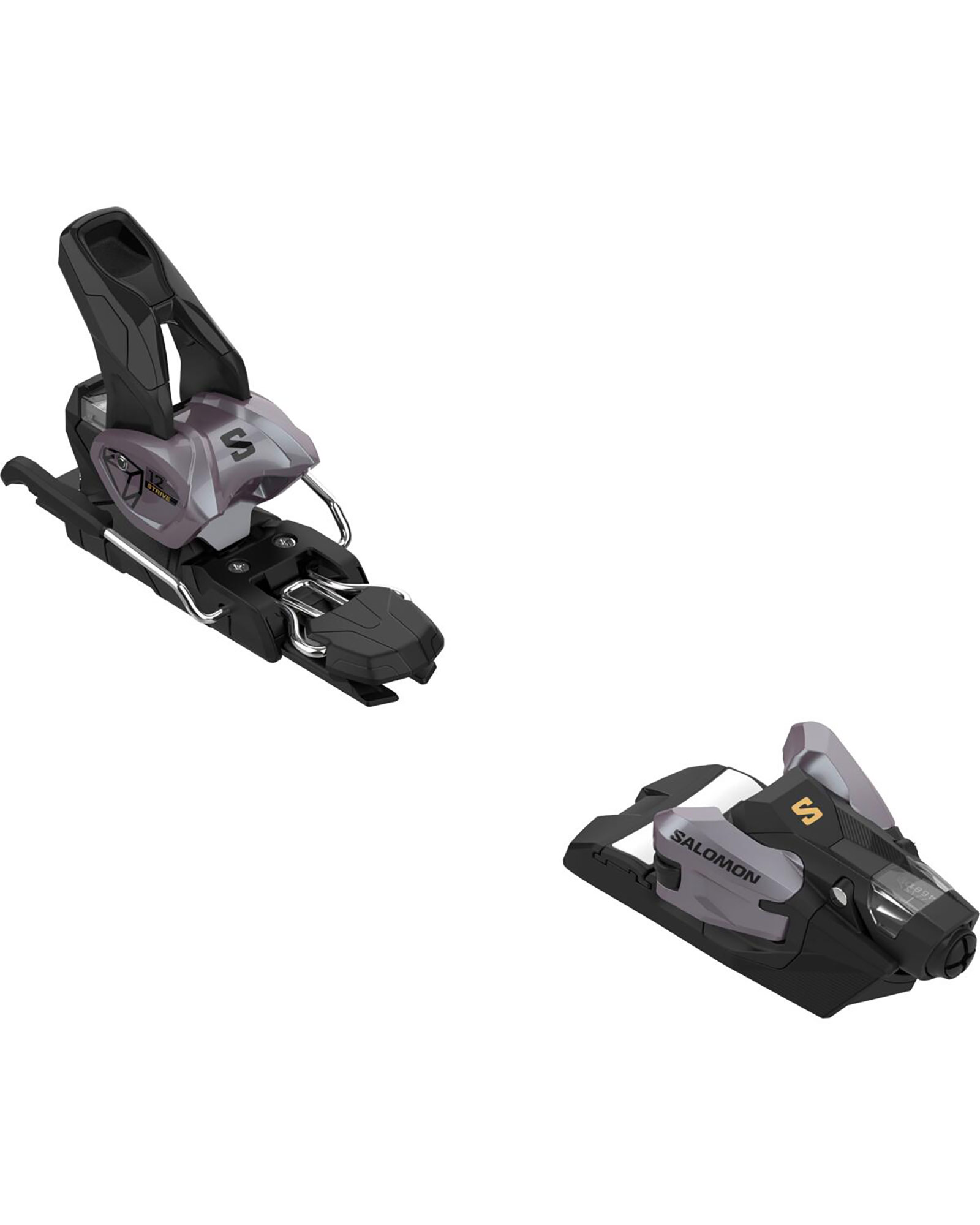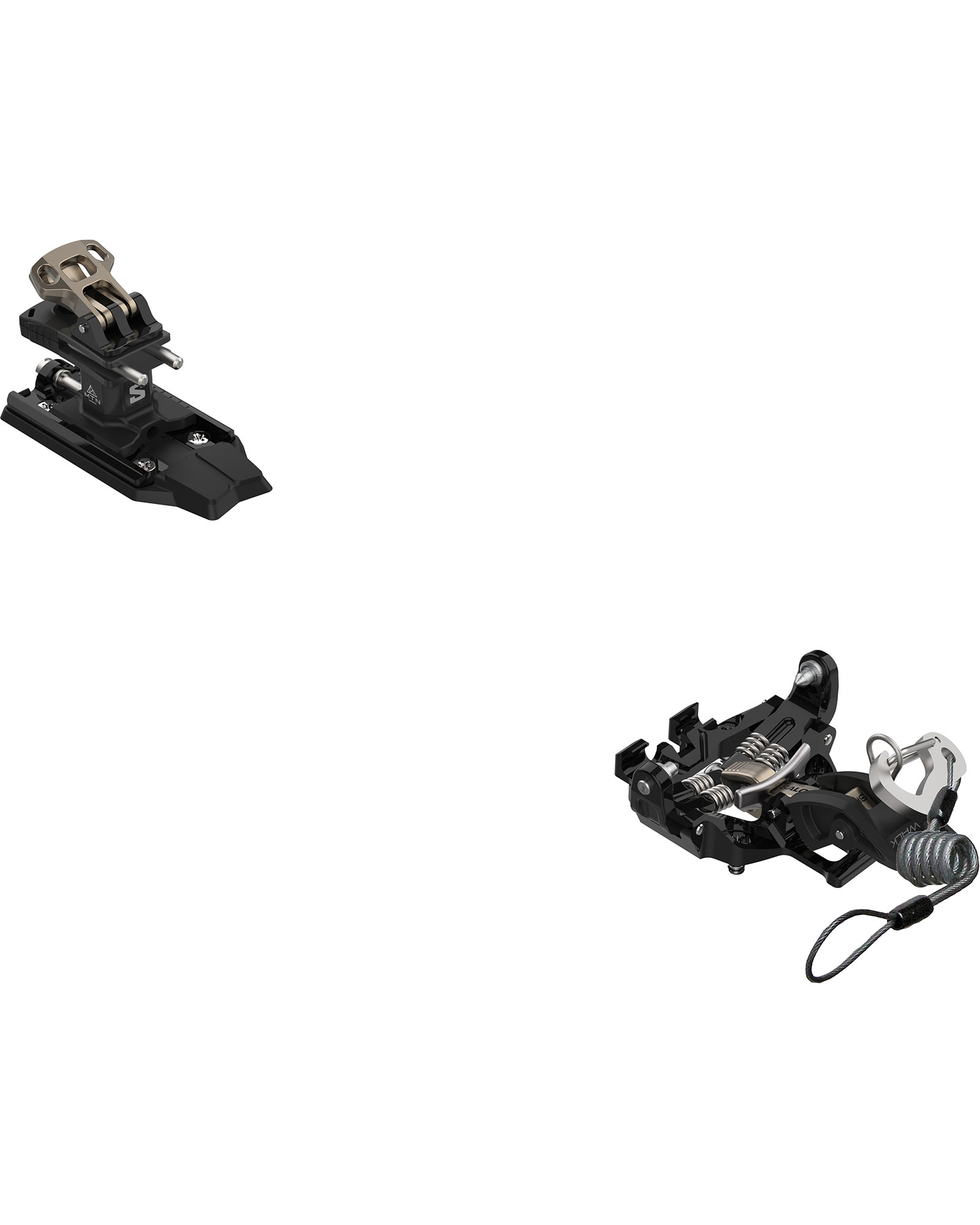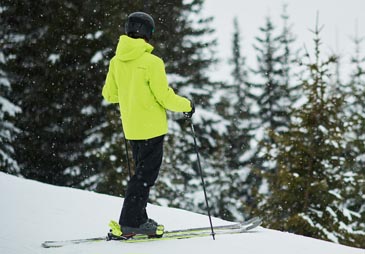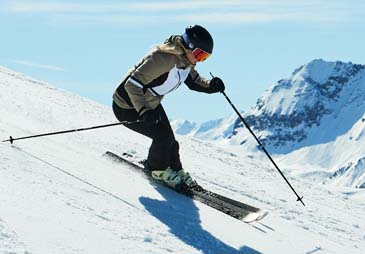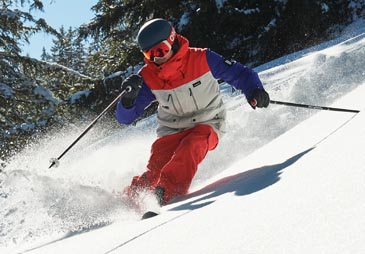How To Choose The Right Ski Boots
We pride ourselves in being amongst the best at fitting ski boots and in having a wide range of ski boots for different budgets, abilities and foot shapes.
For some people buying ski boots might seem a daunting prospect but in reality it's a straightforward process. Our expert fitters follow simple tried-and-tested rules but are also armed with a wide selection of fitting-aids and the knowledge to deal with more complex problems.
Understanding Our Range
Our website showcases a diverse range of ski boots with options for all types of skiers from novice, first-time buyers up to experts tackling anything the mountain has to offer. We have a selection that covers all kinds of fits and shapes and caters for different budgets. To help simplify the range, the boots are graded by performance and have key points identified.
Performance Indicator
This is a guide to show how the boot will perform and what to expect in terms of the overall fit. Shown as a progression from LEISURE through SPORT up to PERFORMANCE.
- Leisure
These models offer extra space, the inner boots use less dense foams and the shell has a higher content of softer plastic for increased comfort. Leisure boots are forgiving and not as precise as sport options. - Sport
A great compromise between comfort and performance. The fit is close and their materials supply plenty of support, the liner is made of firmer foams to ensure an even, all-over pressure. - Performance
Performance boots for experienced skiers have less volume and feel firmer. Control and precision are the most important elements, which means no extra room.
Each product has general description followed by detailed information covering the Fit, Shell, Liner and Key Features. Following this a breakdown of all the key specifications that will help you select the perfect model.
- Fit: An overview of some of the fit characteristics.
- Shell: A description of the materials used to make the plastic shell of the boot, its key features and how these will affect the performance and comfort. The shell dictates the shape of the boot and how much space there will be, as well as providing the performance and power.
- Liner: A description of the liner / inner boot, its key features and how these will affect the performance and comfort. The liner provides the warmth and improves the comfort as long as the shape of the shell and the size are correct.
- Key Features: An overview of the key features for each model and how they will affect the performance and comfort. Every brand has their own unique designs that can improve comfort, performance and ease of use.
- Specifications: These are the details that dictate whether a boot is right for you. Amongst others this includes the category, flex, volume and sole unit.
ALPINE BOOTS
Alpine models are suited to the majority of skiers using a lift network to reach pistes and accessible off-piste.
Custom Shell
Certain models can have the plastic shell heated and moulded as part of the fitting process in store. Once the boot is heated, the inner boot is inserted and the foot is placed inside, allowing the shell to create a customised shape. The result is a better match to foot shape and evens out the pressure for a more comfortable fit and better control.
Custom Liner
All adult boots we stock use custom mouldable inner boots. This means they can be heated in store to soften the foam, then cooled whilst the foot is inside, personalising the fit. The result is an even, all-over pressure, improving both comfort and performance.
Boot Flex
This relates to how much effort it takes to bend (flex) the boot forward. Boots with high flex numbers are stiffer, meaning they are suited to skiers with all or some of these characteristics: fast and aggressive style, better skilled, heavier weight. They feel precise, driving skis extremely efficiently. Less stiff boots perform well at slow and medium speeds, they make it easy to control skis, and are comfortable to use.
Last Width
This gives a useful indication of the amount of space inside the boot. It relates to the width in millimetres of the boot at its widest point, across the forefoot area. The stated width is for a size 26.5 MP (cm) ski boot.
Power Strap
They help to close the boot and keep the shin in contact with the tongue of the liner. Generally, the bigger the strap the better it is at retaining the leg’s movement. Therefore, it takes more effort to use the boot, which will suit advanced skiers better.
Volume
This gives an overall impression of the space inside the boot and the type of foot it will fit best.
Sole Units
How the soles of ski boots interact with ski bindings plays a fundamental role in the binding functioning correctly. There are two sole unit types used in our alpine ski boot range and it is important to understand how they interact with ski bindings:
Alpine
Unless indicated otherwise, all the models in our Alpine Ski Boots range come fitted with Alpine standard sole units (DIN ISO 5355). This is a standard that ensures, when new, the sole unit is compatible with DIN ISO standard Alpine bindings (boots with these soles will also fit into GripWalk branded and MultiNorm/Tour bindings).
GripWalk
The last few years have seen boot brands work on creating sole units that are safer and more comfortable to walk in, resulting in GripWalk. Look for the GripWalk icon on the boot pages to see the models using this new technology. These soles have more tread for increased traction and a rocker or curved effect on the sole that makes walking feel less restrictive.
A boot with a GripWalk sole needs to be used with a GripWalk-specific binding (or a MultiNorm/Tour model) for the release mechanism of the binding to function correctly. All of our current adult Alpine bindings are GripWalk compatible. However, older models of Alpine bindings are unlikely to be compatible with GripWalk boots. Many of the Alpine boots that have GripWalk soles fitted will also have DIN ISO 5355 Alpine soles either in the box or available as a spare part, should you want to use a specific GripWalk boot with an Alpine binding.
BACKCOUNTRY BOOTS
Backcountry boots suit a diverse range of skiers that share the desire to explore further. These boots all have a hike mode and are compatible with backcountry or touring bindings. These boots have slightly different key features compare to alpine models.
Weight
Measured in grams, shown for a half pair. Lighter boots will tend to be less tiring on the ascent, but may not be as powerful.
R.O.M.
The Range of Motion describes the amount of movement in the cuff when the walk function of a boot is engaged. The higher the number, the more the movement, which should increase hiking and skinning comfort.
Compatibility
For a boot to work correctly with a binding it must use an appropriate boot sole. DIN ISO standards refer to products that meet specific industry norms, to ensure they are compatible. The following describes the relevant binding types and the soles they work with.
GripWalk (GW)
Bindings are very similar to regular Alpine models except they use differently shaped Anti Friction Devices (AFD) and work with Alpine and GripWalk boots. GripWalk soles fall under the Tour Norm DIN ISO 9523.
Multi Norm (MN)
Bindings can be Alpine or Backcountry in design and function; DIN ISO 9838 Tour bindings accept DIN ISO 9523 Tour boots and regular Alpine boots DIN ISO 5355.
PinCert
Bindings (sometimes referred to as Hybrid) are only for boots with specific inserts to accept the pins, they must also have a Tour or Alpine DIN ISO standard. This excludes some of the very lightest tour boots.
Pin
Bindings are only for boots with specific inserts to accept the pins, this can include some of the very light boots that fall outside Alpine or Tour DIN ISO norms.
Alpine DIN ISO 13992
Alpine standard bindings take boots conforming to DIN ISO 5355 for Alpine boots. The parameters are tight and most touring orientated boots will not fit Alpine bindings.
5-Steps To The Perfect Fit
Choosing a ski boot might seem a daunting task but we take any worries away and make it simple. All our staff are SUREfit trained and employ the same clear, step-by-step process. Here’s what to expect when you come for a boot fitting.
1. Assessment
We want to know about previous experiences with ski boots, both good and bad, and to get an overview of skiing experience and aspirations. This is done alongside an assessment of the size, shape and biomechanics of the foot and lower leg. Using various techniques and equipment, we’ll find out anything that affects how a boot fits and make a recommendation for the best options, including the correct footbed solution.2. Shell Check
Ski boots comprise two basic components. A softer inner boot, for comfort and control; and a harder shell, for transmission, performance and fit. The shell governs how a boot fits, so a shell check is needed with every boot. The foot is placed into just the shell (no inner boot inside) and the amount of space is assessed in five crucial areas – length, ankle width, forefoot width, instep height and calf. This ensures the correct size, shape and volume. The shell check will clearly indicate the most suitable models.3. Trying On
The next step is to try on the complete boot. Brand new ski boots feel tight and short at first, which is normal. The inner boot is designed to fit in length and volume, initially with no excess space. It’s the customisation and with use, that he foams form to the shape of the foot. Doing up the boots correctly, leg clips first, brings the heel back into position and gives the toes more room. The boot is left on for 10-15 minutes in a standing position, mimicking a relaxed ski stance. It shouldn’t be necessary to try on more than two or three models. At this point it is crucial to remember that as the foam of the liner packs down, the ski boot’s internal volume can increase by about 15%, so a snug fit at the beginning is very important.4. Stabilising
To really make boots perform and be comfortable, you have to ensure your feet are stable while skiing. Boot-fitting problems generally stem from the foot itself, not the boot. Footbeds eliminate a lot of problems, dramatically improving the fit and skiing performance by supporting the foot structure. This helps muscles relax and stops them tiring so quickly, meaning there’s less movement and rubbing caused by collapsing of the foot. We cannot emphasize enough the importance of well-made custom footbeds to successful ski boot fitting.5. Customisation
Standard ski boots should fit well out of the box, but it is very simple to improve on this as they are designed to be adapted. For many models this is a part of the fitting process and, in most cases, will involve the inner being heated and custom moulded to the foot. With certain models the plastic shell can also be custom moulded. As specialists in boot fitting we are also able to make bespoke changes to boots. This can take many forms, including modifications to the shell or liner via heating and mechanically stretching materials, carefully shaving plastics and foams, or altering angles and stance. The end result is increased comfort and better performance.
Tips For Buying Ski Boots
- Allow Plenty of Time
Don't rush yourself, the initial fitting will take between 1 and 2 hours. It doesn't matter if it takes longer – we have the time, patience and skill necessary to make sure you get the right boot. - Know Your Feet
It sounds obvious, but consider and discuss your 'ski boot history' and any previous problems you may have had with ski boots or your feet in general. - Have an Idea of Budget
Do plenty of research and have a budget in mind of what you'd like to spend, though do be flexible if it means getting the most suitable model. Make sure the budget includes supportive footbeds if you don't already own them – they will improve the comfort and performance. - Get Measured by a Professional
Measuring is just a guide. The correct size will be gauged from a shell check with your foot in the plastic shell of the boot, without the inner liner inserted. This will confirm if the size, shape, and volume of the selected model are the correct match to your feet. - Wear Thin Socks
New ski boots have warm padded liners that will support your feet and insulate them. Thick socks will only make the boot tighter, restricting blood flow and ultimately making it colder. Thin socks will improve precision, control and comfort. - Choose the Right Boot
It isn't about how the boot looks or what is recommended in the latest edition of ‘What Ski Boot' magazine. It's about the fit and function.
Fit – the right size, shape and volume matter much more than colour, style or the latest trend. Focus on how they feel.
Function – biomechanics and weight are just as important as ability. Some people need stiffer boots than their ability might suggest, some need softer. The boot should support and work with you. - Select Footbeds & Stability
To really make boots perform and be comfortable, you have to ensure your feet are stable when inside. We cannot emphasize enough the importance of a well-made custom footbed to a successful boot fitting. - Wear Around the House
After buying your new boots, wear them as much as possible either skiing at indoor snow centres or dry slopes, or at home whilst stood up. The more you wear them, the more the liner will soften and mould to your feet. - Modifications
There are only a small number of brands and styles of boots, but there are millions of different feet. Ski boots are designed to be modified to accommodate lumps and bumps. Our staff have the tools and knowledge to stretch and grind plastic shells, transform inner boots and alter angles and flex. - After Sales Service
Sensations like minor tingling, slight numbness or some hot spots can be expected to start with, as the liner packs down. If they don't ease with use, take the boots into a store for modification. Even if you have a more painful problem, please don't panic, in most cases it only takes a small adjustment to fix it. We provide free customisation work on all our boots.
How Should A Ski Boot Feel?
Ski boots don’t fit like normal footwear and as such it’s important to understand how they should feel to make sure you maximise the comfort, fit and performance. Here are our top tips for trying on new ski boots.
- At first, ski boots may feel tight and a bit short... Don’t panic, this is completely normal. Unlike normal footwear, the inner boot is designed to fit precisely in length and volume, initially with no excess space. Much snugger than your shoes.
- Fasten the buckles round the leg first, this will pull the foot back into the rear of the boot. A few ankle-flexes will push the heel further into the heel pocket, producing more toe room. It will feel shorter than shoes, as though your toes are just touching the end, but not being pushed.
- Don’t over-tighten the buckles. This is a common error that’s pretty much guaranteed to cause foot pain. Clips are there to close the boot, not to hold your foot still. The shape, size and volume of the boot alone should be enough to snugly hold the foot. Tighten the clips and you will only create pressure points and discomfort.
- While trying-on, keep the boots on for at least 15 minutes. During this time your body heat will soften and compress the inner boot foam, creating more volume around your foot. You’ll be aware of your toes just touching the end of the boot, and that it is a snug fit. As if someone is holding your feet firmly with both hands, think of a handshake.
- There should be little or no movement at the heel and ankle when replicating skiing movements such as rolling from side-to-side and flexing forwards. If you try to force the heel up, you will be able to, this is not a movement made in normal skiing.
- With use, the inner boot will increase in volume by about 15%, so don’t be scared of the initial close fit, it will relax over the first few days skiing. Go with a boot that is slightly tighter than you expected.
- If you have issues with the fit when trying a ski boot on, or something just doesn’t feel right, try a different boot in the same size, don’t just go up a size.
- Footbeds, footbeds, footbeds. Well-made custom-moulded footbeds will support and stabilise your feet in the correct alignment, dramatically improving fit and skiing performance.
Common Problems: Easy Fixes
Sore Shins
Too much space around the lower leg will allow it to rock back and forth, banging the shin into the tongue. Pronation creates an inward rotation of the lower leg, during flexion the shin rubs laterally on the tongue. Poor quality socks can intensify the problem. Footbeds will support and reduce the rotation.
Cold/Numb Toes
Poor circulation and nerve pressure are the cause. Support from footbeds helps circulation by spreading the pressure evenly over the sole of the foot, allowing muscles to relax and improving blood flow. Heated footbeds are available to further stimulate circulation to the toe ends. Numbness can be caused by the foot collapsing and nipping nerves. Support the bones with a footbed and relieve the pressure. Foot width can be the issue, so adaptations to the boot can help.
Calf/Achilles Pain
Often caused by poor alignment or lack of balance, tightening and fatiguing the calf muscle. Tight or short achilles tendons restrict ankle flex. Constant flexing pulls hard on the tendon creating pain centrally in the lower calf (commonly seen in high heel wearers). Symptoms can be relieved and balance improved by supporting the foot and fitting a Sidas heel lift. Regular stretching exercises of the affected area are recommended.
Metatarsalgia
This refers to pain in the ball of the foot and is often felt as a 'burning sensation'. Causes of a burning sensation in ski boots include:
- Poor balance or stance
- A tight achilles or calf muscle
- Over-tightening boot buckles
- A neuroma
- Over-pronation
These can all contribute to metatarsalgia. People with high or low arches tend to suffer more. Supporting the whole foot to create a more balanced platform inside the boot with firmly constructed footbeds will help.
Pressure Points
Commonly seen on the ankle bones, heels, instep and the widest parts of the forefoot. The most common pressure points are the inner ankle bone and little toe area along the 5th metatarsal, often experienced together due to excessive foot pronation. It can be easily remedied with localised shell stretches and footbeds to support the foot.
Arch Pain
Over-tightening boots that are too big usually leads to excessive downward pressure by the instep buckle. This squashes the foot, makes it pronate heavily and over-stretches the tendons underneath the arch. Other causes for this pain are simple foot fatigue and the more serious problem of plantar fasciitis. Providing effective support with footbeds in a correctly sized boot eliminates the need for over-tightening and provides fatigue-reducing support.

